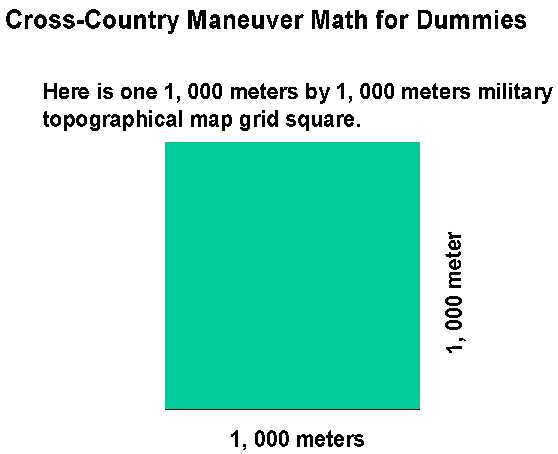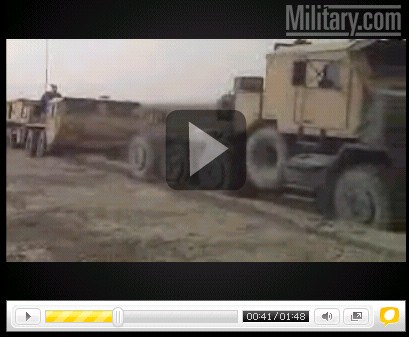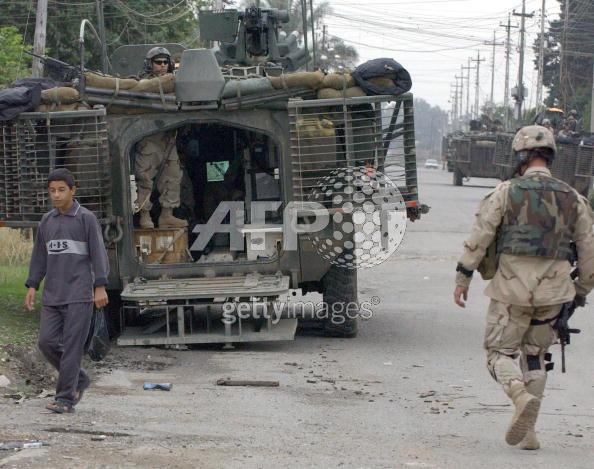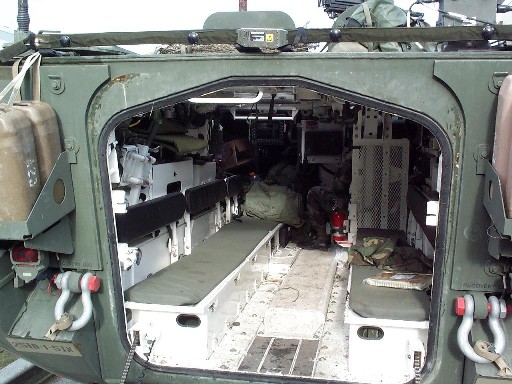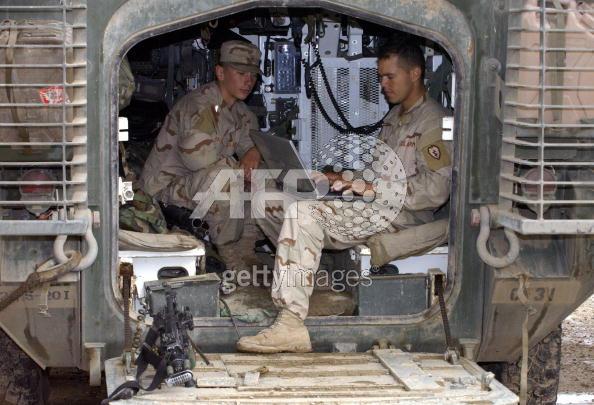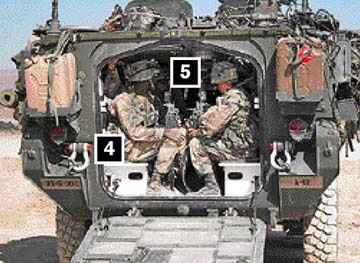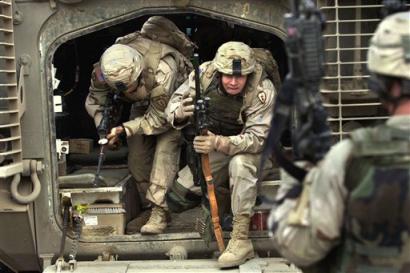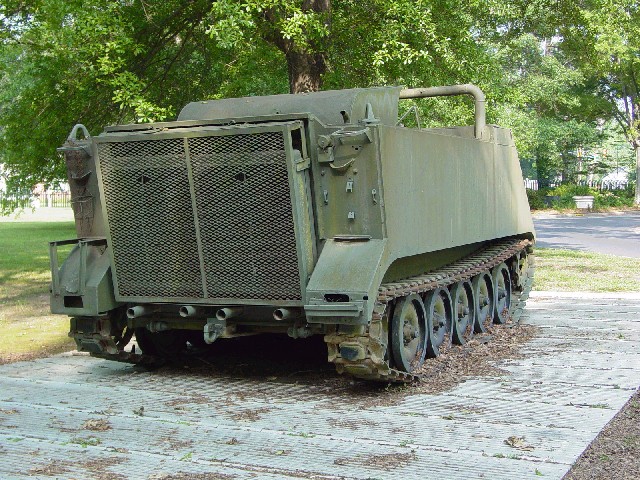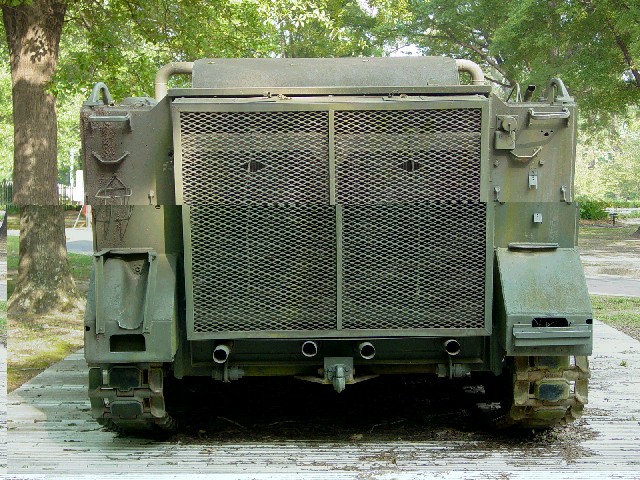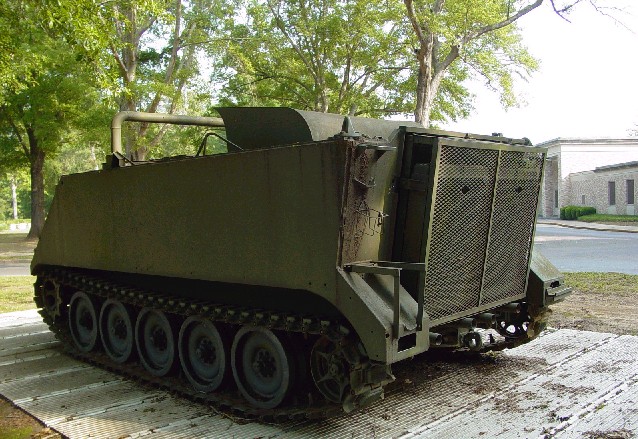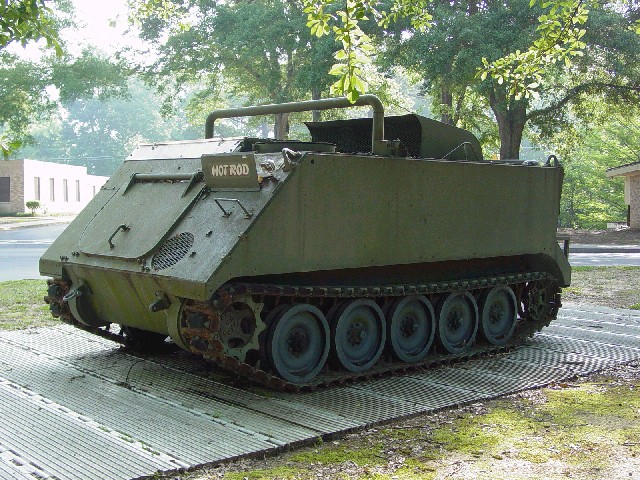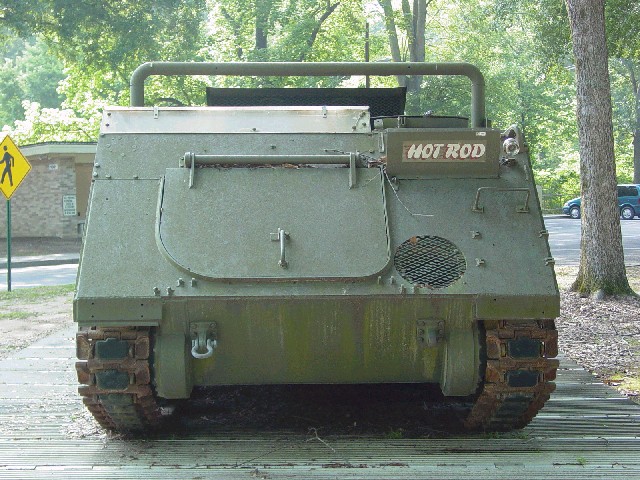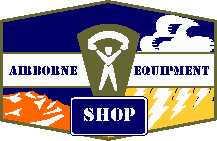Tracks versus Wheels: the Laws of Physics and What's best for Combat---an extreme activity--an illustrated study of the facts
WARNING: "A fool and his money are soon parted...a fool with his LIFE is soon DEparted"
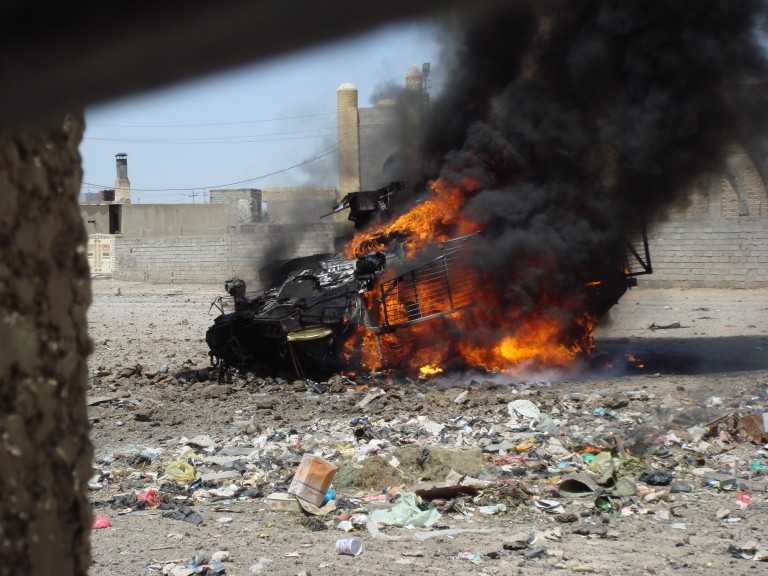
Tracks Mechanically Simpler than Wheeled Trucks that Break-Down Often Because so much Weight is Pressing down on Narrow Wheels/Tires
Stryker trucks are so heavy their wheels are falling off and they cannot drive over 35 mph safely--TRACKS are FASTER and SAFER!
 www.youtube.com/watch?v=9EzRzTj3kWc
www.youtube.com/watch?v=9EzRzTj3kWc
OFFICIAL U.S. ARMY SAFETY BULLETIN
From: Safety of Use, Mailbox II TACOMSent: Thursday, June 22, 2006 3:31 PM
To: xxxxxxxxx
Subject: TACOM SOUM 06-024, STRYKER, (NEW,NEW,NEW)
The following message has been released to the field.
UNCLASSIFIED// DTG: 2006/06/22 19:04:29Z
Subject: Operational Safety Of Use Message (SOUM), TACOM Control No. SOUM 06-024,Stryker Family M1126 Infantry Carrier Vehicle, NSN 2320- 01-481-8575, LIN J22626, EIC AFF; M1127 Reconnaissance Vehicle, NSN 2320-01-481-8572, LIN R62673, EIC AFG; M1129 Mortar Carrier A (Mounted), NSN 2320-01-481-8578, LIN M53369, EIC AFF; XM1129E1 Mortar Carrier B (Dismounted), NSN 2320-01-505-0871, LIN M53369, EIC AF2; M1130 Commanders Vehicle, NSN 2320-01-481-8573, LIN C41314, EIC AFK; M1131 Fire Support Vehicle, NSN 2320-01-481-8574, LIN F86821, EIC AFL; M1132 Engineer Squad Vehicle, NSN 2320-01-481-8570, LIN J97621, EIC AFM; M1133 Medical Evacuation Vehicle NSN 2320-01-481-8580, LIN M30567, EIC AFN, and M1134 Anti-Tank Guided Missile NSN 2320-01-481-8576, LIN A83852, EIC AFP, Vehicle Density, 1,400.
D XXXXXXXXXXXXXXXXXXXXXXXXXXXXXXXXXXXXXXXXXXXXXXXXXXXX
D A X "WARNING" X A N X DEATH OR SERIOUS INJURY TO SOLDIERS, OR DAMAGE X N G X TO ARMY EQUIPMENT WILL OCCUR IF THE INSTRUCTIONS X G E X IN THIS MESSAGE ARE NOT FOLLOWED.
X E R XXXXXXXXXXXXXXXXXXXXXXXXXXXXXXXXXXXXXXXXXXXXXXXXXXXX R
1. Distribution:
A. This is an "Operational" Safety Of Use Message. This message is only applicable to the Stryker vehicles. MACOM Commanders will retransmit this message to all subordinate Commands/Activities within 24 hours of receipt of this message and acknowledge receipt of this message within five working days to: CDRTACOM, Warren MI, AMSTA-LC- LPIM, DSN 786-6096, Commercial (586) 574-6096 or DDN address: Safetyofuse@Tacom.Army.Mil.
B. The Stryker Brigade Commanders must also track and provide a report to PMO SBCT stating compliance of this message for all subordinate Commands/Activities no later than 30 days after receipt of message. POC for this report in PMO-SBCT Logistics is Tony McCown COMM 586-532-6704, mccowna@tacom.army.mil.
2. Problem:
A. Stryker hub/spindle assembly failures have occurred during testing and in the field. The hub/spindle assembly, Left Rear, 10651072-011PEG, Left Steered, 10657317-011, Right Rear, 10651073- 011PEG, and Right Steered, 10657316-011 can shear off causing the wheel assembly to roll away from the vehicle during severe driving operations. Eight separations occurred on the Stryker variants in test, along with a reported nine separations from vehicles in AOR. Magnetic particle inspection of wheel assemblies being returned from AOR, indicate spindle cracks.
B. Expected results if failure occurs. The worst credible mishap associated with the failure of the hub/spindle assembly is a wheel separation from the vehicle. Spindle failure can result in serious injury or death if the failed wheel assembly were to collide with dismounted personnel or passing vehicles.
3. User Actions:
For CONUS and OCONUS (World wide) Operations:
NOTE: Deployed units are exempt from restrictions listed in Paragraphs 3.A and 3.B of this message. However, deployed units must comply with the directions given in Paragraphs 3.C and 3.D of this message.
A. Restrict the weight of the vehicles with mileage over 5,000 miles on the shared roads to a maximum weight of 41,000 pounds as identified by the manufacturer as the design weight of the vehicle.
B. Restrict speed of vehicles with mileage over 5,000 miles to 35 miles per hour on roads that are shared with public traffic and considered highly congested.
C. Assure units continue to perform PMCS inspection of wheel hubs as stated in the Stryker Operator TMs for oil leaks on vehicles and wheel assemblies. Applicable TMs for Stryker variants are: TM 9-2320- 311-10-1, TM 9-2320-311-10-2, TM 9-2320-311-10-3, TM 9-2320-311-10-4, TM 9-2320-311-10-5, TM 9-2320-311-10-6, TM 9-2320-311-10-7, TM 9-2320- 311-10-8, TM 9-2320-311-10-9, TM 9-2320-311-10-12.
D. Perform diagnostic testing of all eight wheels during semi- annual services by units' Field Service Representatives (FSRs). PMO- SBCT has developed a diagnostic tool which was released May 2006. The new diagnostic procedure will be included in the Interactive Electronic Technical Manuals (IETM). This will lift all speed and weight restrictions.
E. Unit Commanders, contact your local TACOM Logistics Assistance Representative (LAR) or your State Surface Maintenance Manager upon receipt of this message for assistance. For assistance in locating your TACOM LAR, see paragraph 6D.
4. TACOM/PM actions: PM SBCT has completed validation of new spindle diagnostic procedures and design for rear wheel assemblies, for front wheel assemblies, target date: October 2006. PM SBCT will follow up with an addendum if necessary.
5. Supply Status: There are no supply concerns/requirements.
6. POCs:
A. System Engineer, DOROTHY FOLEY, email: foleyd@tacom.army.mil., DSN 786-2071, COMM (586) 753-2071.
B. Chief Engineer, GARY SCHULTZ, email:schultzg@tacom.army.mil., DSN 786-2109, COMM (586) 753-2109.
C. Acting Chief Logistics, JEFF MAGNER, email:magnerj@tacom.army.mil., DSN 786-2055, COMM (586) 753-2055.
D. To find your TACOM Logistics Assistance Representative (LAR), you must be a registered user in the Army Electronic Product Support (AEPS) database. If you are a registered user, click on this link:
https://aeps2.ria.army.mil/Services/Lars/Tacom/larmap/LARlocate/larmap.c fm Then select the appropriate region; i.e. CONUS, Europe, Far East, and SWA. Select the location nearest you and click on a name. This will give you a LAR's name, DSN and commercial phone number, email address, and photo. If you are not a registered user, request access at the public page:
https://aeps.ria.army.mil/aepspublic.cfm click on "Access Request Form" and follow the instructions for obtaining an AEPS userid. If you don't have access to AEPS, you can also obtain this information by contacting the TACOM Senior Command Representative (SCR) for your area. CONUS-East Region includes all Active Duty, National Guard and Reserve Units in Wisconsin, Illinois, Michigan, Indiana, Ohio, Kentucky, Tennessee, Mississippi, Alabama, Georgia, Florida, South Carolina, North Carolina, Virginia, West Virginia, Maryland, Delaware, Pennsylvania, New Jersey, Connecticut, Rhode Island, Massachusetts, New York, New Hampshire, Vermont, Maine and FORSCOM. CONUS-East SCR can be reached at DSN 236-6921, Commercial 910-396-6921. CONUS-West Region includes all Active Duty, National Guard and Reserve Units in North Dakota, South Dakota, Minnesota, Nebraska, Iowa, Missouri, Kansas, Oklahoma, Arkansas, Louisiana, Texas, Colorado, New Mexico, Nevada, California (south of San Francisco), Arizona, Utah, Montana, and Wyoming. CONUS-West SCR can be reached at DSN 737-0263, Commercial 254-287-0263. Pacific Region includes all Active Duty, National Guard and Reserve Units in Washington, Oregon, Idaho, Alaska, Hawaii, California (north of San Francisco) and Guam, Pacific SCR can be reached at DSN 357-2991, Commercial 253-967-2991. Europe Region includes all Active Duty, National Guard and Reserve Units in Great Britain, Germany, Belgium, Luxemburg, Italy, Bosnia, Kosovo, and Macedonia. Europe SCR can be reached at DSN 314-375-3461, Commercial 01149 621-487-3461, in Germany, 0621-487-3461. Far East Region includes all Active Duty, National Guard and Reserve Units in Korea, Okinawa, Kwajalein, and Japan. Far East SCR can be reached at DSN 315-721-7101, commercial 011-82-2-2270-7101. UNCLASSIFIED//
Classification: UNCLASSIFIED Caveats: NONE
Tracks Spread Weight Over Larger Surface Area and are Lighter on Ground than Wheels
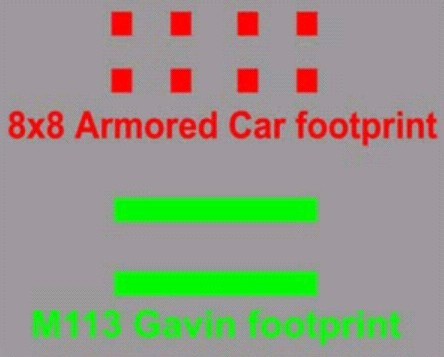
Cross-Country Mobility for Dummies, version 1.0
Iraq is Light Tank Country: No Excuse for Wheeled Trucks Blown up on Roads; Majority of Terrain is OPEN DESERT and Marshy Farmland
 www.youtube.com/watch?v=ouTK3S2Z9oQ
www.youtube.com/watch?v=ouTK3S2Z9oQ
MORE VIDEO PROOF!
Here's a "62 mph" (actually only 35 mph) Stryker truck going 0 MPH in the Mud
 www.youtube.com/watch?v=u_E25Yyv0ZE
www.youtube.com/watch?v=u_E25Yyv0ZE
The REAL Stryker --- Chapter 1: Mobility
 www.youtube.com/watch?v=Fn6cyaOBmUg
www.youtube.com/watch?v=Fn6cyaOBmUg
Stryker vs. Home Gate (Guess who wins?) So much for "built for urban combat"; The Brady Bunch and Florence Henderson Can Beat the Stryker trucktards; "Marsha! Marsha! Marsha!...my Stryker has a bloody nose!"
 www.youtube.com/watch?v=UWgbuQg0DFk
www.youtube.com/watch?v=UWgbuQg0DFk
The REAL Stryker --- Chapter 2: Protection
 www.youtube.com/watch?v=_R-jUZmZQm8
www.youtube.com/watch?v=_R-jUZmZQm8
The REAL Stryker --- Chapter 3: Firepower
 www.youtube.com/watch?v=sg6c7u1N-Wg
www.youtube.com/watch?v=sg6c7u1N-Wg
 www.youtube.com/watch?v=VwsqpnYQqjA
www.youtube.com/watch?v=VwsqpnYQqjA
The REAL Stryker --- Chapter 4: Versatility
 www.youtube.com/watch?v=A9Xe9MKm9uA
www.youtube.com/watch?v=A9Xe9MKm9uA
"Highly Skilled" Narcissist, "Infantry-Centric" Special Stryker Victim Combat Teams
 www.youtube.com/watch?v=cyCm5vaXg98
www.youtube.com/watch?v=cyCm5vaXg98
The REAL Stryker --- Chapter 5: Logistics
 www.youtube.com/watch?v=CI5wiD3sxwk
www.youtube.com/watch?v=CI5wiD3sxwk
"He who desires to reform the government of a state, and wishes to have it accepted and capable of maintaining itself to the satisfaction of everybody, must at least retain the semblance of old forms; so that it may seem to the people that there has been no change in the institutions, even though they are entirely different from the old ones. For the great majority of mankind are satisfied with appearances, as though they were realities, and are often even more influenced by the things that seem than those that are"
http://usacac.leavenworth.army.mil/CAC/milreview/English/MarApr08/indexengmarapr08.asp
 Air-Mech-Strike Study Group Confronts U.S. Army on Past, Current and Future Force Structure & Operations!
Air-Mech-Strike Study Group Confronts U.S. Army on Past, Current and Future Force Structure & Operations!
http://usacac.leavenworth.army.mil/CAC/milreview/English/MarApr08/BookReviewsMarApr08.pdf
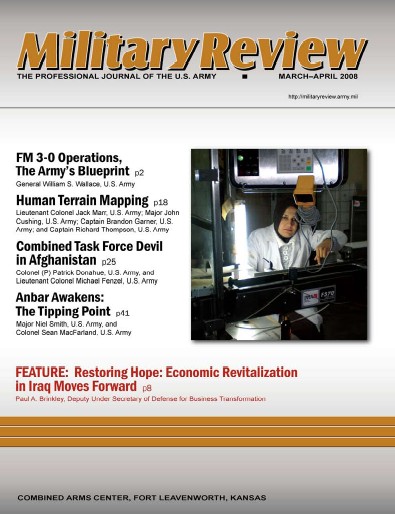
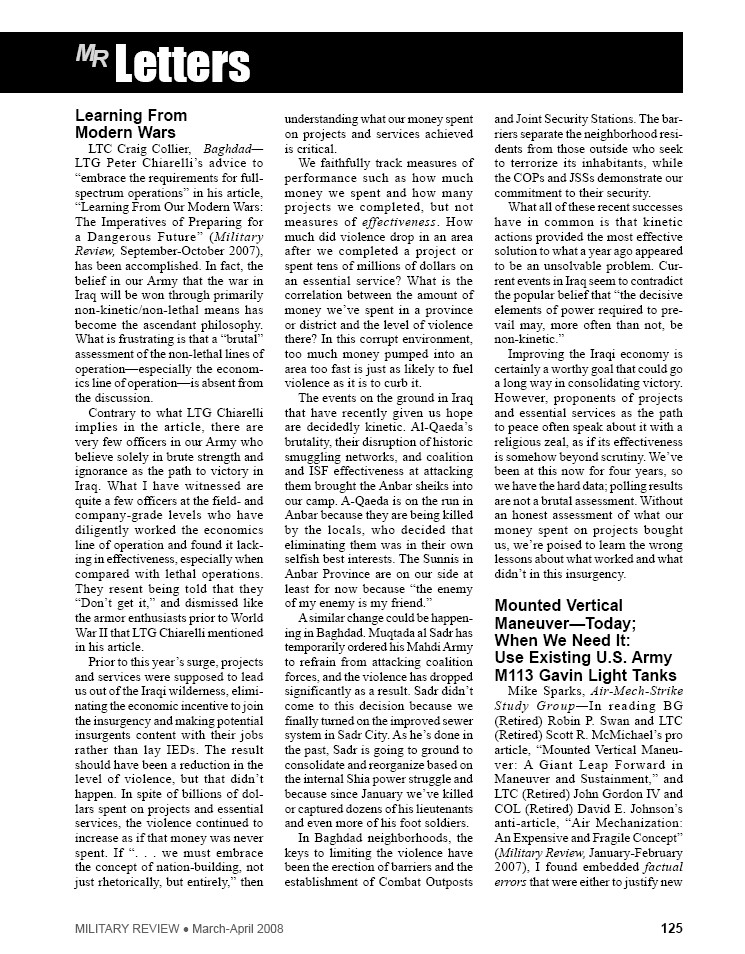
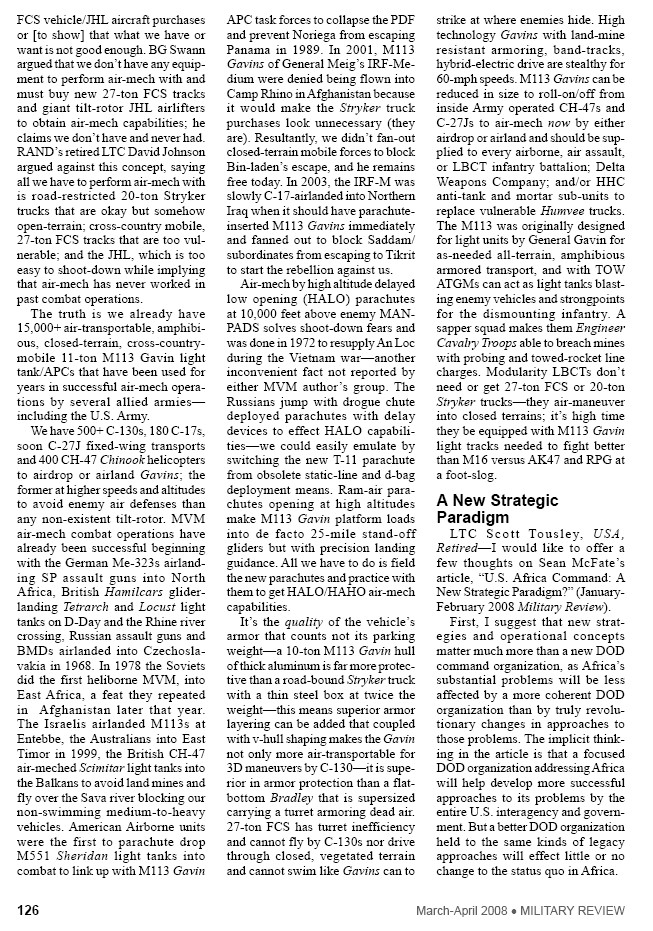
Plain Text
Mounted Vertical Maneuver Today; When We Need It: Use Existing U.S. Army M113 Gavin Light Tanks
Mike Sparks, Air-Mech-Strike Study Group
In reading BG (Retired) Robin P. Swan and LTC (Retired) Scott R. McMichael's pro article, "Mounted Vertical Maneuver: A Giant Leap Forward in Maneuver and Sustainment,"¨ and LTC (Retired) John Gordon IV and COL (Retired) David E. Johnson's anti-article, "Air Mechanization: An Expensive and Fragile Concept"; (Military Review, January-February 2007), I found embedded factual errors that were either to justify new
Page 126 March-April 2008 Military Review
FCS vehicle/JHL aircraft purchases or [to show] that what we have or want is not good enough. BG Swann argued that we don't have any equipment to perform air-mech with and must buy new 27-ton FCS tracks and giant tilt-rotor JHL airlifters to obtain air-mech capabilities; he claims we don't have and never had. RAND's retired LTC David Johnson argued against this concept, saying all we have to perform air-mech with is road-restricted 20-ton Stryker trucks that are okay but somehow open-terrain; cross-country mobile, 27-ton FCS tracks that are too vulnerable; and the JHL, which is too easy to shoot-down while implying that air-mech has never worked in past combat operations.
The truth is we already have 15,000+ air-transportable, amphibious, closed-terrain, cross-country-mobile 11-ton M113 Gavin light tank/APCs that have been used for years in successful air-mech operations by several allied armies; including the U.S. Army.
We have 500+ C-130s, 180 C-17s, soon C-27J fixed-wing transports and 400 CH-47 Chinook helicopters to airdrop or airland Gavins; the former at higher speeds and altitudes to avoid enemy air defenses than any non-existent tilt-rotor. MVM air-mech combat operations have already been successful beginning with the German Me-323s airlanding SP assault guns into North Africa, British Hamilcars glider-landing Tetrarch and Locust light tanks on D-Day and the Rhine river crossing, Russian assault guns and BMDs airlanded into Czechoslavakia in 1968. In 1978 the Soviets did the first heliborne MVM, into East Africa, a feat they repeated [with fixed-wing aircraft] in Afghanistan later that year. The Israelis airlanded M113s at Entebbe, the Australians into East Timor in 1999, the British CH-47 air-meched Scimitar light tanks into the Balkans to avoid land mines and fly over the Sava river blocking our non-swimming medium-to-heavy vehicles. American Airborne units were the first to parachute drop M551 Sheridan light tanks into combat to link up with M113 Gavin APC task forces to collapse the PDF and prevent Noriega from escaping Panama in 1989. In 2001, M113 Gavins of General Meig's IRF-Medium were denied being flown into Camp Rhino in Afghanistan because it would make the Stryker truck purchases look unnecessary (they are). Resultantly, we didn't fan-out closed-terrain mobile forces to block Bin-laden's escape, and he remains free today. In 2003, the IRF-M was slowly C-17-airlanded into Northern Iraq when it should have parachute-inserted M113 Gavins immediately and fanned out to block Saddam/subordinates from escaping to Tikrit to start the rebellion against us.
Air-mech by high altitude delayed low opening (HALO) parachutes at 10,000 feet above enemy MANPADS solves shoot-down fears and was done in 1972 to resupply An Loc during the Vietnam war¡ another inconvenient fact not reported by either MVM author's group. The Russians jump with drogue chute deployed parachutes with delay devices to effect HALO capabilities; we could easily emulate by switching the new T-11 parachute from obsolete static-line and d-bag deployment means. Ram-air parachutes opening at high altitudes make M113 Gavin platform loads into de facto 25-mile stand-off gliders but with precision landing guidance. All we have to do is field the new parachutes and practice with them to get HALO/HAHO air-mech capabilities.
It's the quality of the vehicle's armor that counts not its parking weight; a 10-ton M113 Gavin hull of thick aluminum is far more protective than a road-bound Stryker truck with a thin steel box at twice the weight; this means superior armor layering can be added that coupled with v-hull shaping makes the Gavin not only more air-transportable for 3D maneuvers by C-130; it is superior in armor protection than a flat-bottom Bradley that is supersized carrying a turret armoring dead air. 27-ton FCS has turret inefficiency and cannot fly by C-130s nor drive through closed, vegetated terrain and cannot swim like Gavins can to strike at where enemies hide. High technology Gavins with land-mine resistant armoring, band-tracks, hybrid-electric drive are stealthy for 60-mph speeds. M113 Gavins can be reduced in size to roll-on/off from inside Army operated CH-47s and C-27Js to air-mech now by either airdrop or airland and should be supplied to every airborne, air assault, or LBCT infantry battalion; Delta Weapons Company; and/or HHC anti-tank and mortar sub-units to replace vulnerable Humvee trucks. The M113 was originally designed for light units by General Gavin for as-needed all-terrain, amphibious armored transport, and with TOW ATGMs can act as light tanks blasting enemy vehicles and strongpoints for the dismounting infantry. A sapper squad makes them Engineer Cavalry Troops able to breach mines with probing and towed-rocket line charges. Modularity LBCTs don't need or get 27-ton FCS or 20-ton Stryker trucks; they air-maneuver into closed terrains; it's high time they be equipped with M113 Gavin light tracks needed to fight better than M16 versus AK47 and RPG at a foot-slog.
The Bradley-more-mobile-than-thou LIE Corrected: Up-Engined M113A3 Gavins are More Mobile than Bradleys
 www.youtube.com/watch?v=i3mn0ECMieY
www.youtube.com/watch?v=i3mn0ECMieY
This may be our most important video--and its not even a video!
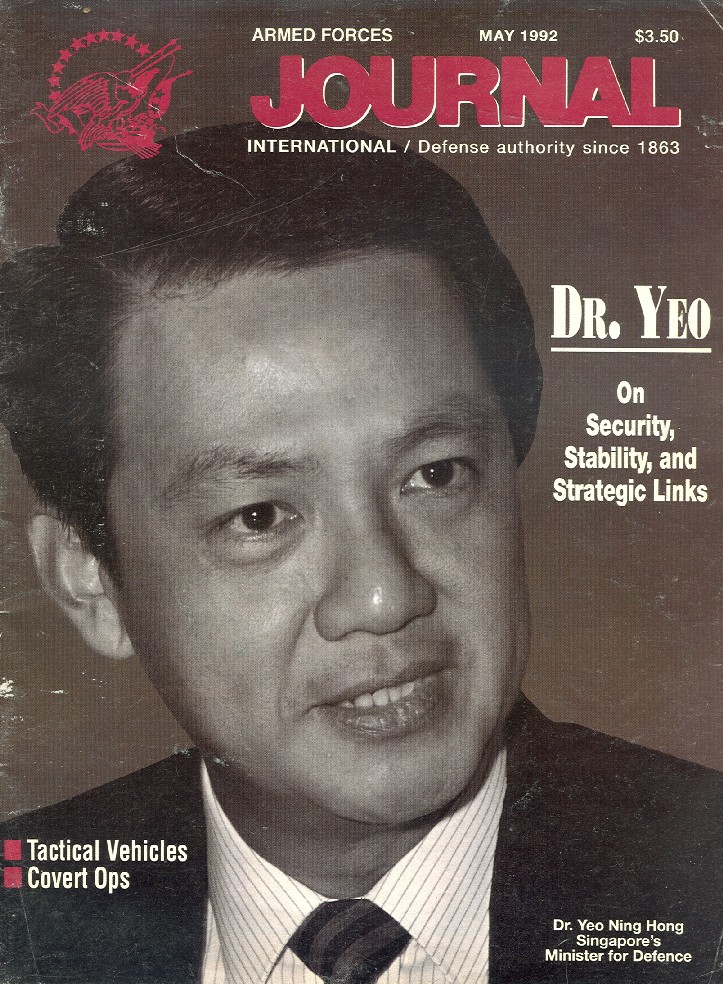
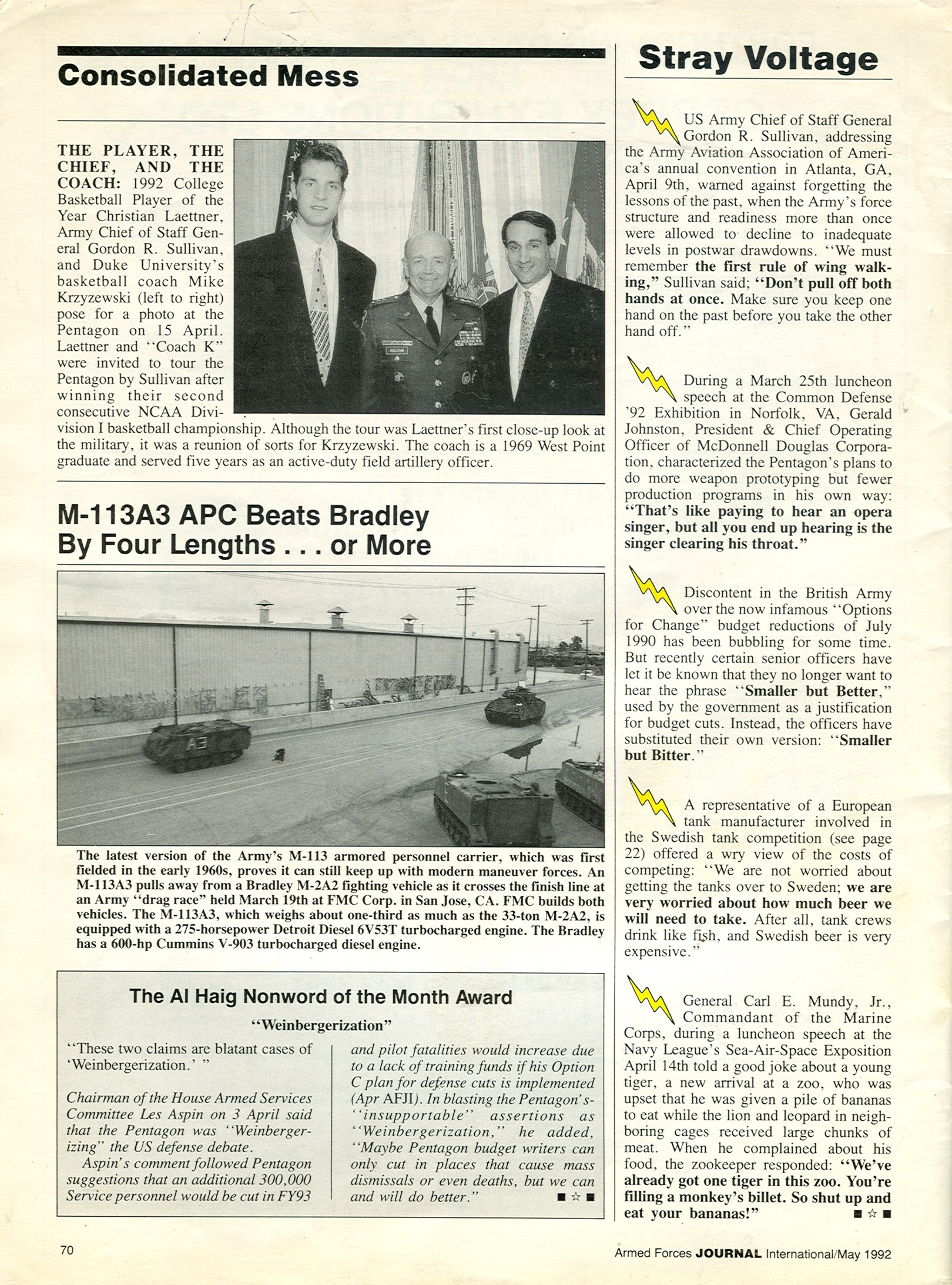

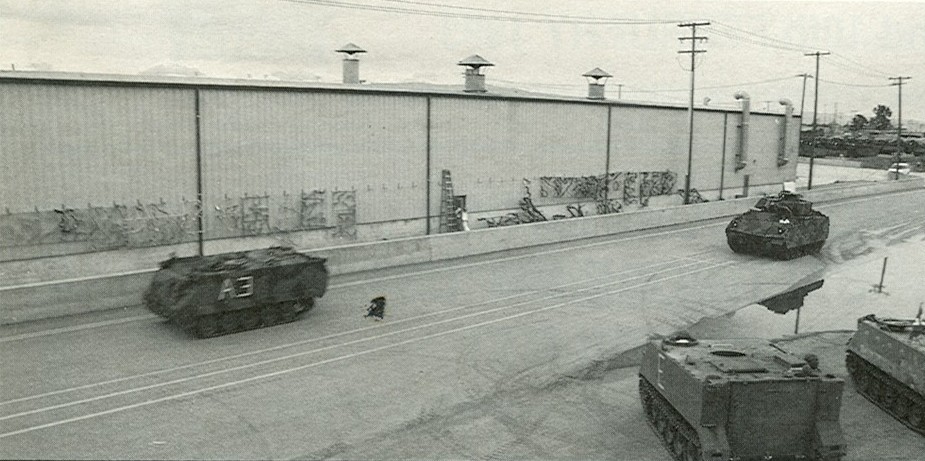
Its a slide show of the May 1992, Armed Forces Journal magazine which on page 70 shows a photo of an up-engined M113A3 Gavin BEATING an up-engined M2 Bradley in a paved ROAD RACE. Can't get any more favorable terrain than this. Since then, the Bradley has only got heavier (36 tons) with greater ground pressure and is even LESS mobile (barely over 35 mph on roads) than it was back then. The Caption reads:
M-113A3 APC Beats Bradley By Four Lengths...or More
The latest version of the Army's M-113 armored personnel carrier, which was first fielded in the early 1960s, proves it can still keep up with modern maneuver forces. An M-113A3 pulls away from a Bradley M-2A2 fighting vehicle as it crosses the finish line at an Army "drag race" held March 19th at FMC Corp. in San Jose, CA. FMC builds both vehicles. The M-113A3, which weighs about one-third as much as the 33-ton M-2A2, is equipped with a 275-horsepower Detroit Diesel6V53T turbocharged engine. The Bradley has a 600-hp Cummins V-903 turbocharged diesel engine.
THE LIE that "the Bradley is more mobile than the M113A3 Gavin" has been corrected forever. Its high time for the U.S. Army to relearn WHAT RIGHT LOOKS LIKE.
Those who spread such lies don't know what they are talking about and are damaging THE NATIONAL SECURITY OF THE UNITED STATES OF AMERICA that needs CLOSED TERRAIN MOBILITY capabilities that only M113 Gavin light tracks can provide for our light infantry to have transport/fire support so we fight the enemy with superior overmatch--not at a disastrous "Blackhawk Down!" M16 vs. AK47 + AKM foot-slog. Heavier vehicle forces also need a CAVALRY in M113 Gavin variant light tank/APCs moving ahead to screen the ground for mobility suitability and make first contact with the enemy so we can DEVELOP THE SITUATION to our advantage--not just slam into them with the main body in a meeting engagement and have to fight for our lives; win, lose or draw in decisive engagement--as what befell the 3rd ID (M) whose wheeled Humvee scouts couldn't be sent ahead lest they get pinned-down and destroyed as the truck-borne marines were to the east (why they were 6 days AWOL to Baghdad allowing Saddam & loyalists to escape to start rebellion against us) in their epic, "Thunder Run" into Baghdad:
The laws of physics on planet earth don't lie or bend to greedy defense contractors like FMC/UDLP/BAe (see HBO black comedy "Pentagon Wars") who want only to supply America's Army with medium-weight Bradleys for OPEN TERRAIN heavy forces who have over the years after the AFJI piece was run covered-up the fact that their up-engined M113A3 or other type Gavins as LIGHT TRACKED TANKS/APCs @ 11 tons with 300 horsepower BEAT Bradleys that are 3x times heavier with only 600 hp--do the math--in MOBILITY in ALL TERRAINS. Up-engined, low-ground pressure, M113 Gavins are what America's LIGHT forces need--not bloated, high-ground pressure wheeled Humvee/Stryker/MRAP trucks.
BAe can keep on selling improved Bradleys for America's HEAVY units to use for 2D OPEN TERRAIN maneuver AND (read that again--AND) upgrade M113 Gavins for our light forces to be Light Air-Mechanized for 3D maneuver over and through ALL terrains. We CAN "chew bubble gum & walk"--if we are PROFESSIONAL and not bureaucrats--in an ego pyramid where only "one" thing can be on top. Life is complicated; one-size does NOT fit all in war any more than it does in peace. Bureaucrats that want to homogenize America's Army into one medium-weight platform to make their bean-counting life easier are KILLING and MAIMING our gullible, don't-know-what-right-looks-like Soldiers and harming our defense.
Stryker Truck DEAD Demand JUSTICE: Scrap this Lemon Truck!
 www.youtube.com/watch?v=pvXQGn0WZ4Q
www.youtube.com/watch?v=pvXQGn0WZ4Q
And yes, Virginia, the up-engined M113A3 Super Gavin is not only more mobile than Bradleys its BETTER PROTECTED because its fuel tanks are OUTSIDE and thick high hardness steel or ceramic tiles and RPG pre-det caging can be added to its 1.75" THICK HULL THAT IS ALREADY THICKER THAN THE 1" Bradley's in the first place. More power-to-weight ratio in the Gavin also means more passive armor like described and ACTIVE armor like the IMI IronFist that defeats heavy tank main gun rounds as well as anti-tank guided missiles (ATGMs) and RPGs.
 www.youtube.com/watch?v=l5xuui-2WLU
www.youtube.com/watch?v=l5xuui-2WLU
How America has become French: Road-bound in wheeled trucks constantly getting ambushed; Americans do this today in Humvee/Stryker/MRAP trucks, WE ARE FRENCH! Vive LeEmulation!
"The primary purpose of an army - to be ready to fight effectively at all times - seemed to have been forgotten.... The leadership I found in many instances was sadly lacking and I said so out loud. The unwillingness of the army to forgo certain creature comforts, its timidity about getting off the scanty roads, its reluctance to move without radio and telephone contact, and its lack of imagination in dealing with a foe whom they soon outmatched in firepower and dominated in the air and on the surrounding seas - these were not the fault of the Soldier, but of the policymakers at the top."
--General Matthew Ridgway on the U.S. Army During the Korean War
 www.youtube.com/v/o3YGE28vGJ0
www.youtube.com/v/o3YGE28vGJ0
 www.youtube.com/watch?v=bYFIMVgxgLM
www.youtube.com/watch?v=bYFIMVgxgLM
Here's an 8-wheeled HEMMTT and something akin to our FMTV trucks mired hopelessly in open terrain mud that even another multiple wheeled truck HET designed to tow 70-tow heavy tanks cannot pull-out...this is THE WHEELED ARMY! this is the "transformation" being fed to us...BE FRENCH..USE WHEELED TRUCKS...BE EASILY AMBUSHED LIKE THE FRENCH...BE DEFEATED LIKE FRENCHMEN...
VIDEO: LAV-1 with 25mm autocannon turret hopelessly stuck in terrain rut...
Its counter-intuitive but true...
M113 Gavin track by LAV-III wheeled truck
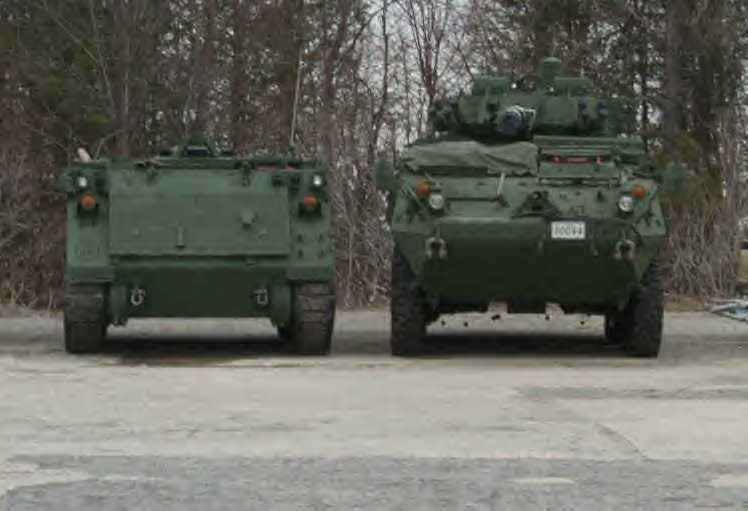
Scimitar tracked light tank by Land Rover wheeled jeep
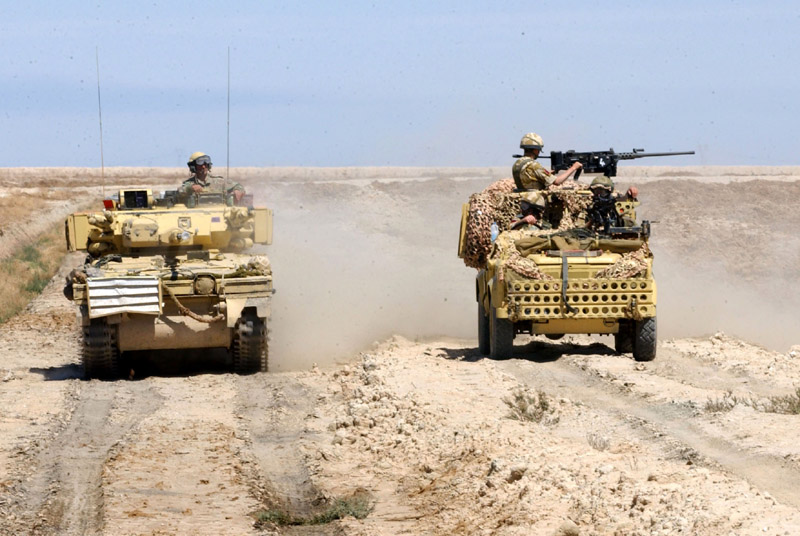
However, for all of this weight, you do not get much available interior volume compared to tracks--tracks are more compact than slapping a thin box on TOP of wheeled suspension, drivetrain and steering by a factor of 28%.
LAV-III/Strykerrrr outside
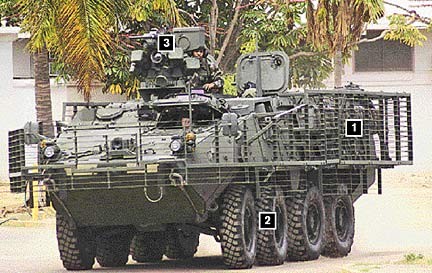
LAV-III/Strykerrrr insides
M113A3 Gavin insides
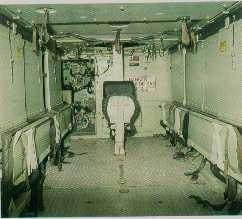
Gavins are ideal medical and casualty evacuation vehicles! You can easily strap-in two wounded Soldiers on the floor--you can't do this in a cramped Stryker truck!
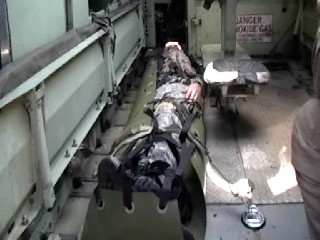
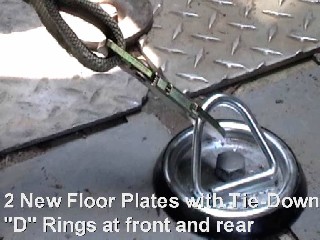
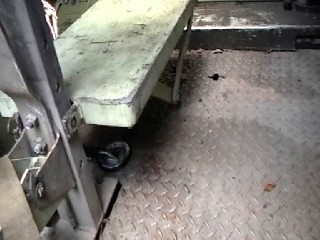
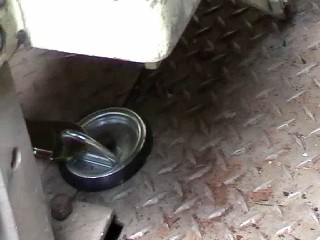
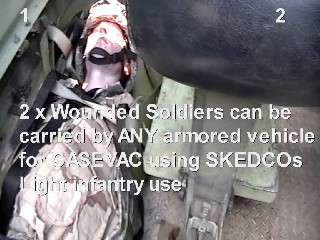
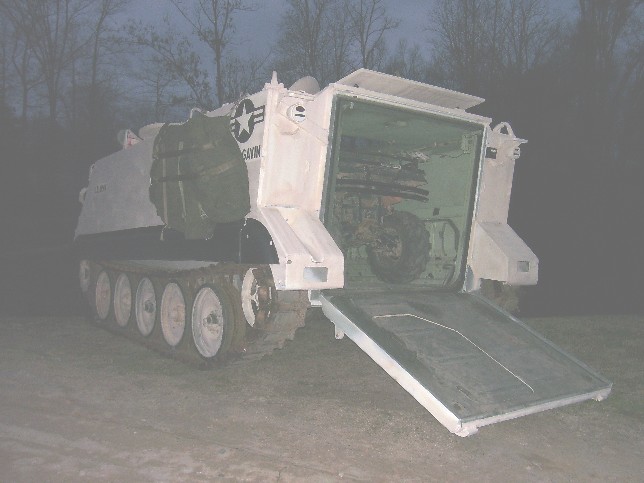
The Gavin is so roomy we can roll-on/off 4x4 ATVs, dirt bikes, ATACs and ATBs! Try doing this with a cramped, space inefficient--Stryker! You can't!
Low ground pressure M113 Gavins go cross-country boldly! High ground pressure Strykers get stuck...
 www.youtube.com/watch?v=MfzjqY0Pq3c
www.youtube.com/watch?v=MfzjqY0Pq3c
 www.youtube.com/watch?v=Blr-fZpNBrQ
www.youtube.com/watch?v=Blr-fZpNBrQ
M113 Gavins can swim across rivers, lakes and even oceans...Strykers can't surf...
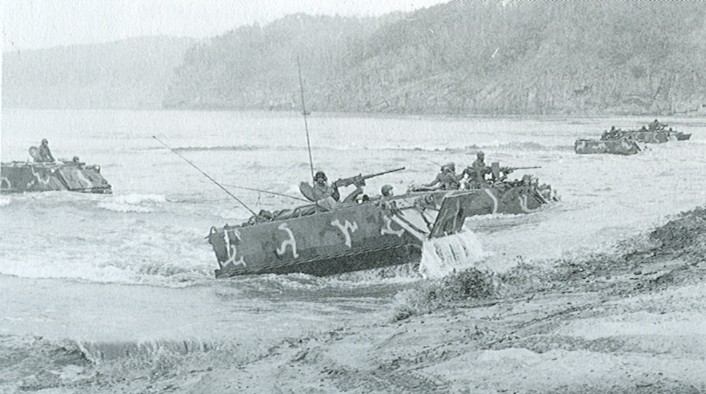
 www.youtube.com/watch?v=G3laGiXASTM
www.youtube.com/watch?v=G3laGiXASTM
 www.youtube.com/watch?v=1hbUusptJbs
www.youtube.com/watch?v=1hbUusptJbs
What Strykers do is SUCK. The Army brass cannot over-rule the laws of physics!
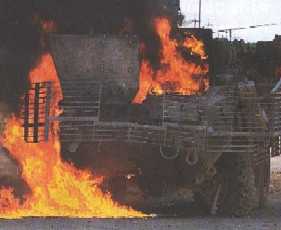
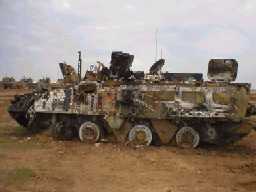
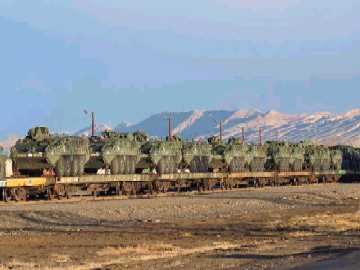
 www.youtube.com/watch?v=593xBm71SBE
www.youtube.com/watch?v=593xBm71SBE
Strykerrrrs need transporters to get to the battlefield and once there cannot survive non-linear attacks, what's the point?
Lessons of WW2, Korea and Vietnam Ignored By Current Generation of Military Incompetents
--German Panzer General Guderian said after the fall of France in 1940
The failure to understand the battle against the earth (TBATE) loses wars; in 1940 the Allies ASS U MEd the Ardennes forest was not passable by German light tanks and had no French Maginot line forts there. The Germans poured through and France fell within weeks and the British were forced from the continent.
Germany panzers primarily in excellent Czech-built T35/T38 Light Tanks Swarm through Ardennes Forests Allies Thought were "No-GO" terrain
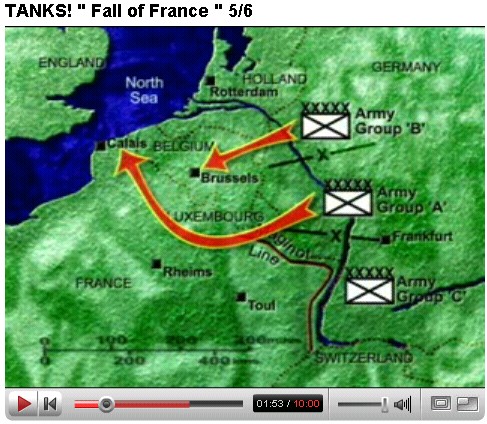
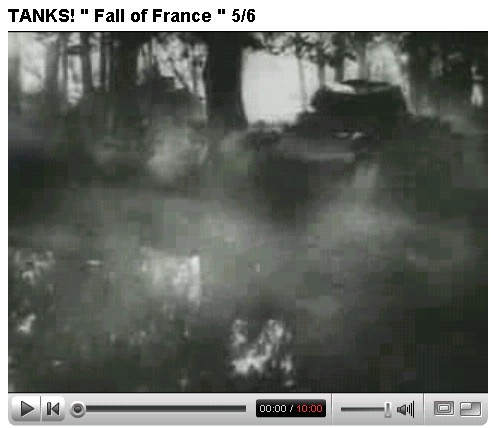
 www.youtube.com/watch?v=g4MD3-fzglM
www.youtube.com/watch?v=g4MD3-fzglM
Yet a year later, the Germans not yet fully tracked mechanized and with many wheeled trucks and no Airborne 3D to act as cavalry ahead of the main body falls short of Moscow due to severe winter mud and snow---and Russian bypassed troops and inserted paratrooper and light tank resistance.
Partially-Mechanized German Army on wheels and horses defeated by TBATE
 www.youtube.com/watch?v=CC_B8hvWPIA&sdig=1
www.youtube.com/watch?v=CC_B8hvWPIA&sdig=1
The irony is that today, TBATE is ignored by the techno-narcissist U.S. military with increasing regularity as it emasculates itself into wheeled trucks under the delusion that help by mouse-click will solve physical problems in the mud.
Even the Brits have light narcissistic egomaniacs clinging to wheeled trucks!
"Protection comes not with weight, per se but by design"
Here's the problem; DESIGN implies that we must be TRACKED in order to spread the vehicle's weight over a larger area in order to get a lower ground pressure to get floatation over all terrains to avoid roads and land mines to go cross-country, at will.
All this "deck chair re-arranging" on WHEELED "Titanics" simply does not address the fact that their weight is concentrated on too small a foot print and this makes them high ground pressure and dependant upon roads/trails = they cannot go cross-country at will and roll into land mines. Even if wheeled trucks are unarmored or lightly armored to "float" over terrain by RPM or torque there's no guarantee they will not get stuck in ruts or soft terrain and they certainly cannot survive much kinetic energy bullet and/or high explosive attacks.
Phil West writes:
"Some familiar but also new insights
http://defenceoftherealm.blogspot.com/2007/09/mobility-protection-and-mindsets.html
Not that Israeli vehicles deliberately have their axles ahead of the crew. Rear engine also means that a mine hit with the front wheels is less likely to take out the whole vehicle"
phil
----------------------
http://defenceoftherealm.blogspot.com/2007/09/mobility-protection-and-mindsets.html
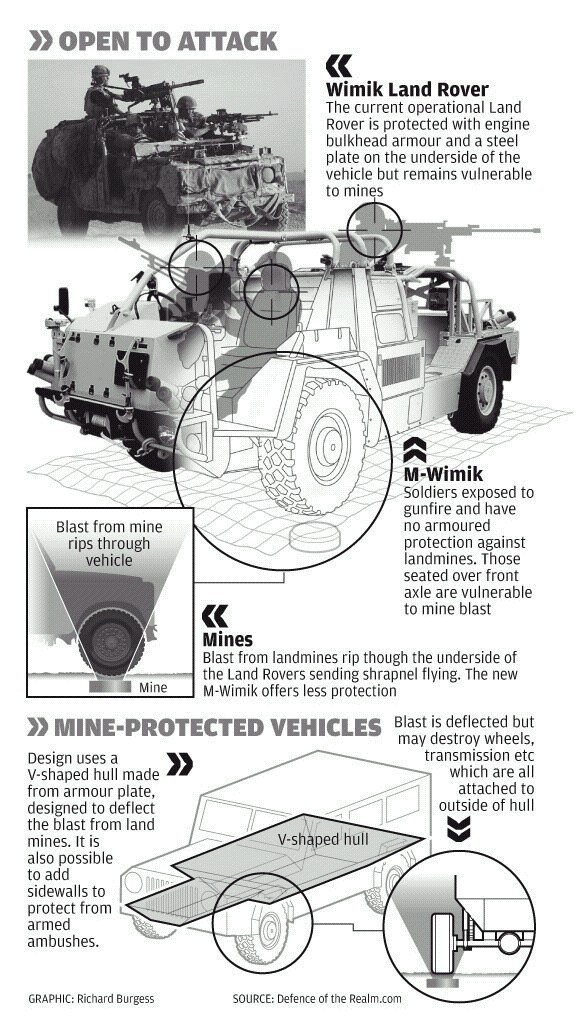
Sunday, 9 September 2007
Mobility, protection and mindsets
The piece in the Independent on Sunday has been long in the making, with a huge amount of effort and care going into the superb graphic (click to enlarge), produced by designer Richard Burgess, which sets out with the utmost clarity the problems with existing vehicles and the principles on which the design of protected vehicles should be based.
Unfortunately, the piece is tied in with the sad news of two more soldiers killed, yet another two from the 2nd Battalion, The Mercian Regiment (Worcesters and Foresters).
Few details are given, other than they were taking part in a "pre-planned operation to disrupt Taliban activity, south of Garmsir, southern Helmand Province, when their patrol was attacked by enemy fighters". We do not know, therefore, whether this was amounted or a foot patrol and whether lightly armoured WIMIKs were a factor in their deaths.
Returning to the Independent on Sunday, it notes that the facts that the previous deaths, of Private Ben Ford and Private Damian Wright, 23, arose after they were caught "by a landmine explosion", with an Afghan interpreter who also died, and a third Soldier seriously wounded. The paper adds:
But the fact that they were in a Wimik, an open-topped variant of the Snatch Land Rover in which many British Soldiers have been killed in Iraq and Afghanistan, has heightened controversy over the equipment they are given to carry out their missions ... [an] issue [that] goes to the heart of the Military Covenant, under which Soldiers are promised adequate resources in return for accepting the risk of death or disablement in the line of duty. Then, the criticisms of this blog are rehearsed, in particular the indictment of the M-WIMIK .
Next, however, we get the comments of Francis Tusa, editor of Military Analysis. Although he concedes that the MoD had been slow to react against the threat of roadside bombs, he stresses that, "no vehicle is completely safe against mines." We then get something of the mantra, with Tusa opining that, "You can't just keep adding weight to vehicles to protect them. Many troops are very keen on the WIMIK. In certain areas you need mobility, and you use that and the terrain for your protection."
That then brings in my counter, that the MoD announcement that Ptes Ford and Wright were killed on a "routine patrol" north of Helmand's provincial capital, Lashkar Gah, rather than in the desert expanses further south, implied that their WIMIK had been used in a role in which it was vulnerable. This brought partial agreement from Tusa, who noted that, "Once you are on roads, you need a vehicle that is more suitable, such as the new Mastiff, which has more armour. If you use the Wimik in a convoy, that is less than optimal."
But then we get an MoD spokesman telling us that the "real defence" of the M-Wimik "is its mobility and agility. It's well suited to the terrain of southern Afghanistan, where speed and manoeuvrability is required".
Therein lies the heart of the argument, one we saw rehearsed with the Snatch controversy, where Lord Drayson, as long ago as June 2006, told the House of Lords,
I do not accept that Snatch Land Rovers are not appropriate for the role. We must recognise the difference between protection and survivability. It is important that we have the trade-offs that we need for mobility. The Snatch Land Rover provides us with the mobility and level of protection that we need. These same arguments are rehearsed in an ill-natured and sometime foul-mouthed debate on the informal Army forum, but the limitations of the mindset are betrayed most clearly by Tusa in his declaration that, "You can't just keep adding weight to vehicles to protect them".
The point, of course, is that protection comes not with weight, per se but by design, as amply illustrated by the graphic. Instead of the conventional chassis, the heart of the vehicle is a v-shaped monocoque steel hull which provides the protection and the structural base on which to mount wheels, transmission and the body. By this means, it is possible to have both mobility and protection - the two concepts are not mutually incompatible.
As to weight penalty, the larger, fully mine protected RAM-2000, which is able to mount three rather than two crew-served weapons, weighs in at 41/2 tons, while the completely unprotected M-WIMIK comes in a four tons.
Tusa's mindset, however, is one-dimensional in that he is thinking on the conventional tramlines of building a vehicle first, for whatever function, and then adding protection as an afterthought.
Another issue is so-called "situational awareness", which basically means that the crew has unobstructed 360 degree vision but, as the precursor version of the RAM-2000 demonstrates (the RBY Mk 1 Armoured Car), the two attributes are not at all incompatible (see above). Even the British Army in 1939 equipped itself with an vehicle that offered armour and "situational awareness" - in the Dingo scout car (illustrated below). And, although it was highly vulnerable to mines, the point is thus proven.
Nevertheless, much of the Army forum "discussion" was focused on only one of the possible alternatives, the Mastiff, against which the M-WIMIK is far more mobile and offers the situational awareness that the larger vehicles cannot. But what is missing is any recognition that the Israeli-designed RAM-2000 is the nearer parallel and could probably perform most, if not all the functions of the M-WIMIK. Yet, it could also perform safely the routine tasks of convoy escort and routine patrols, for which the M-WIMIK is entirely unsuited and dangerously vulnerable.
If greater off-road performance is necessary, than there is room for an entirely new vehicle, but all the indications are that the MoD has not even given the idea of a protected high-mobility vehicle any thought. Instead, it sticks to the mantra of "speed and manoeuvrability", heedless of the fact that neither are any protection against a hidden mine or IED.
Thus it is that Soldiers must die, and die, and die, all because the most simplest of ideas seems to elude those great "experts" who advise the MoD on their vehicle designs.
Page 77 of Hunnicutt's book Bradley: a History of American Fighting and Support Vehicles shows the post-Korean war U.S. Army considered wheeled tin cans to motorize troops along with cross-country-mobile tracks. The "revolutionary", "new" road-bound wheels were rejected and M113 Gavin tracks were built; 57 years of combat success has followed ever since. Those that say LAV3/Strykers are "newer" are incompetent ignorants of armored vehicle history or willing liars.
In fact, Lieutenant General James M. Gavin BEFORE WW2 realized with the rest of the U.S. Army that wheeled trucks to "motorize infantry" was fatally flawed and was rejected as a norm and only tolerated as an expedient if a linear battlefield situation existed where safe "rear" areas existed.
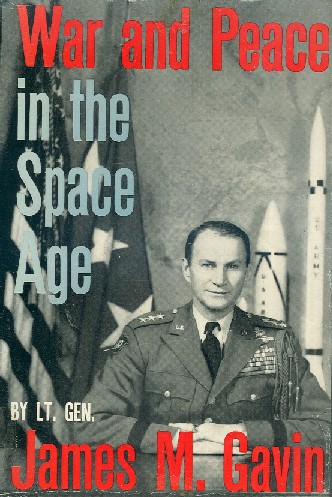
On page 47 of his masterpiece on DoD reform and future war, "War and Peace in the Space Age" (WAPITSA), General Gavin gives an example of where a good idea (using fossil fuel engines for mobility) gets rightly rejected by bad, half-assed applications like wheeled trucks which result in huge targets for the enemy when the concept just needed to be applied to TRACKS that can go cross-country and not be clusterfucked along roads/trails by being widely dispersed:
"My feelings were assuaged by a story that an instructor told me of a truck-mobility exercise conducted by the students between World War I and World War II. It was based upon the German invasion of France in World War I. As history now shows, the enveloping right wing of the German Army failed to carry out its role and thus the French left wing, and perhaps the entire army, was saved from annihilation. Analyzing the campaign in the twenties, and on the assumption that the gasoline engine was here to stay and would be used in numbers in war, the students were given unlimited truck mobility to carry out the German attack once again in a map exercise. After loading all of the German troops in trucks and stringing them back on miles and miles of roads, they reached the conclusion that, as the battle was joined, the trucks were a disadvantage and the German Army would have been better off without them. They actually slowed the German attack down. So, the conclusion: foot mobility is better than truck mobility."
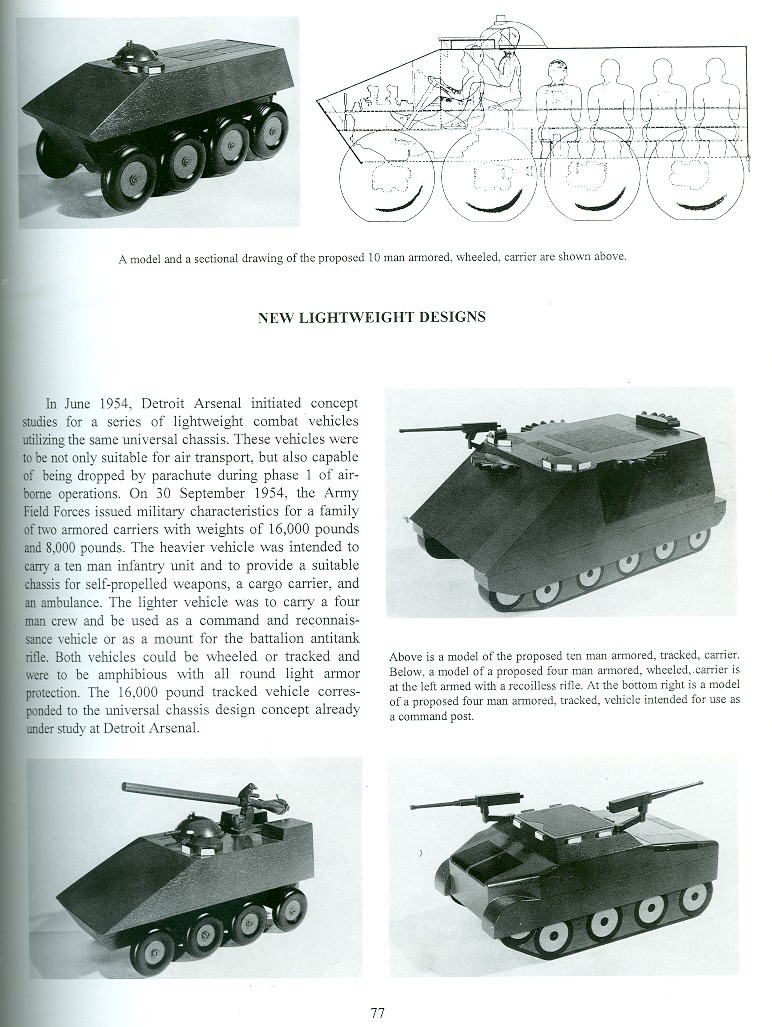
 www.youtube.com/watch?v=UHfl_9WCVXM
www.youtube.com/watch?v=UHfl_9WCVXM
General Gavin in 1954 condemned the road-bound U.S. Army/marines and how it led to defeats in Korea in his ground-breaking article, "Cavalry, and I Don't mean Horses":
"Where was the cavalry? It was and still is in the minds of military planners and historians. And I don't mean horses. I mean helicopters and light aircraft, to lift Soldiers armed with automatic weapons and hand carried antitank weapons, and also lightweight reconnaissance vehicles, mounting antitank weapons the equal or better of the Russian T-34s.Technologically we could have had them. Because of our deification of heavy equipment--and the combat practices of late World War II, which deluded us into believing that heavy armor is cavalry--we didn't have them. We lost the cavalry when we mounted it in weighty tanks and trucks, all of which move (if the terrain will allow them to move at all) at exactly the same speed as motorized infantry, if not slower.
If ever in the history of our Armed forces there was a need for the Cavalry arm - airlifted in light planes, helicopters, and assault type aircraft - this was it. The debacle that followed out acceptance of combat under these terms is now a tragic chapter in our history.
All the soul searching in the world, and the most brilliant staff cerebrations, will not conjure up tactical success in Cavalry action unless the means of achieving it are provided our Cavalry commanders. They do not have the means today. They are road-bound. Even assuming they will be fortunate enough to fight in countries where roads are numerous, they are no more mobile then the mechanized infantry division they are expected to screen from the enemy."
After WW2, 8-wheeled trucks exactly like today's horrible LAV3/Strykers were considered but rejected by the Korean war-wise U.S. Army (Page 77 from Hunnicutt's book, Bradley: a History of American Fighting and Support Vehicles. That the Stryker-o-philes would reject sound military practice to foist wheeled truck narcissism in 1999 to the present day just so they could boast they are not in tracks like the heavy force troopers they look down on is immoral and a rejection of the purpose which General Gavin created such troops to be HONEST and FULLY ADAPTIVE USING WHAT WORKS BEST. It also shows that there is no "adult supervision" within DoD that fact-checks alledgedly "new" schemes to waste billions demanding a sound combat and experiential base for them. If someone with rank says something is good, the lower-ranking lemmings say, "Yes, Sir!" which is the height of disloyalty to go along with anything blindly.
The Smoking Gun: Light Tanks/APCs More Mobile than Medium-Weight Ones, and M113 Gavins were the MOST effective weapon in soft open and vegetated closed terrain terrain Vietnam--NOT the helicopter
Noted armor historian and WW2 Hobart's "Funnies" (combat engineer tanks) combat veteran Major Kenneth Macksey wrote in his 1991 book, Tank versus Tank, page 167:
"The Vietnam War was a war dominated by infantry and firepower, in which AFVs, initially, were relegated to a limited part because the Vietnamese possessed virtually no tanks of their own and their enemies persisted in thinking of the struggle as a guerrilla war in country unsuitable to tanks. Not until 1967, when the United States carried out a feasibility study, was it discovered that tanks could move in 61 per cent of the country during the dry season and in 46 per cent in the wet; and that APCs could move in 65 per cent of Vietnam all year round. Thereafter the forces of South Vietnam rapidly raised their armor content to be matched only meagerly, however, by their opponents. As a result, AFVs were almost entirely employed in support of infantry; the principal threat to them was posed by mines and infantry anti-tank weapons, including ATGW. Yet AFVs were rated the most cost-effective weapon system for a country where the helicopter was enjoying a great vogue on the battlefield."
What this means is as follows:
M113 Gavins (light tank/APCs) 8 PSI ground pressure = 65% of Vietnam dry/wet 24/7/365
M48 Pattons (medium tanks) 11.2-12.2 PSI * ground pressure = 46% of Vietnam wet season
.............................................................................................................61% of Vietnam dry season
A light mechanized infantry with M113 Gavin light tank/APCs would fight mounted and/or with these vehicles nearby rendering fire support and ammunition, water, food transport 65% of everywhere to include swimming across lakes/rivers; only 35% of the terrain was dismounted foot-travel only--we fight the enemy from positions of overmatching SUPERIORITY with more firepower and units of fire, as well protection from his fires.
If we medium-mechanize or motorize with high ground pressure FCS 30-ton tanks (12 PSI) or 20-ton Stryker truck (30 PSI) wheels 54% of a soft, wet terrain like Vietnam will be NO-GO to them and be enclaves for the ENEMY to reside in safety lest we fight them M16 vs. AK47 & RPG even or at a disadvantage. The enemy could attack us during the wet winters and withdraw without fear of us pursuing them lest we get stuck or stick to roads where they ambush us with land mines. The FCS will only be mobile in firm, open terrain types, and the Stryker, road-bound unless very firm, dry, open terrain is available. Neither FCS or Strykers can swim.
Sub-Notes
* http://afvdb.50megs.com/usa/m48patton.html
Paul Hornback's Wheels vs. Tracks Article in the March-April 1998 issue of U.S. Army Armor magazine (before it became politicized) Warned Us Against the Wheeled SASO "Nation-Building" Racket EuroFad
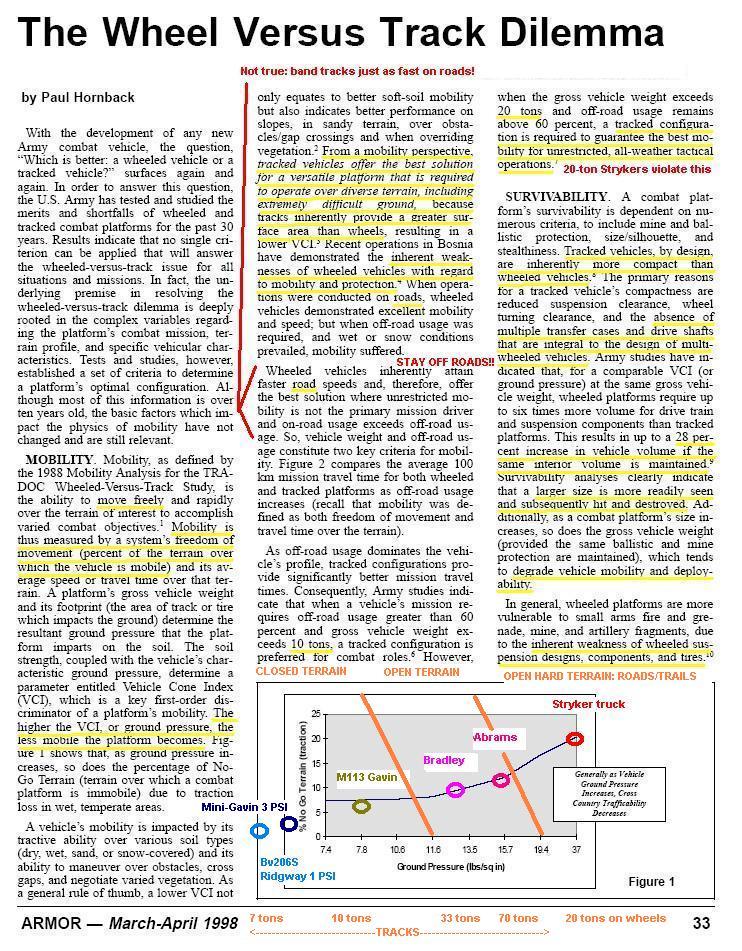
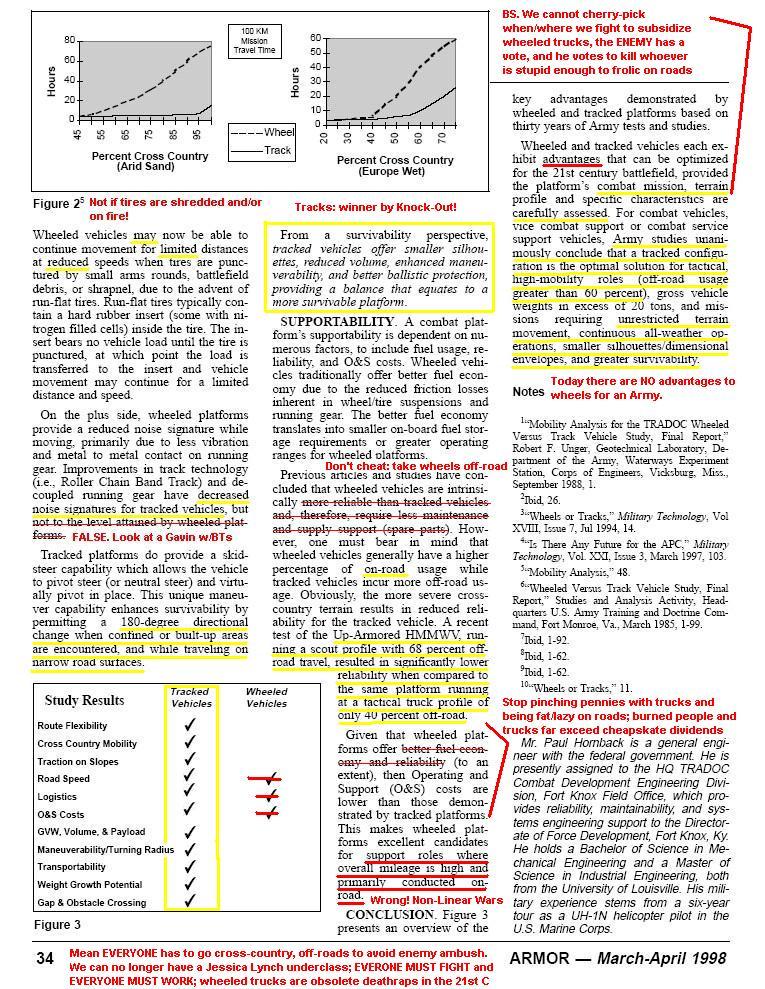
Steel Tracked M113 Gavin went 75+ mph in 1979! There's NO justification for wheeled trucks on the non-linear battlefield!
According to Hunnicutt Bradley: A History of American Fighting and Support Vehicles on page 109, the "Hot Rod" averaged 75.76 mph over a 500 foot gravel test track at Fort Knox in 1979. Power was 2 x 440 cubic inch Chrysler gas engines driving two modified 727 transmissions.
Imagine what M113 Gavins would do today on band tracks with hybrid-electric drive!
www.combatreform.org/bandtracks.htm
www.combatreform.org/hybridelectricdrive.htm
...thanks be to retired LTC Dave Tooker for finding these pictures!!
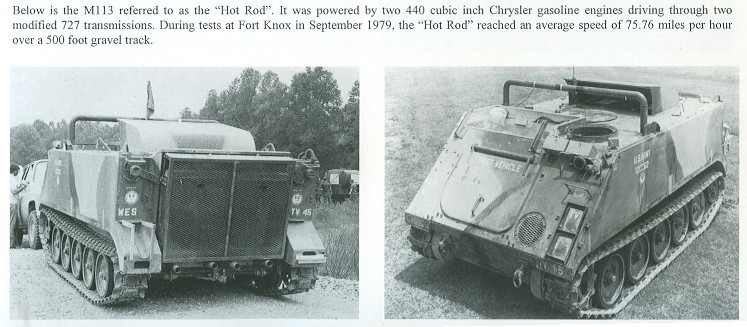
Here's the Ripsaw tracked vehicle without armor protection as of yet but showing its great potential...Walter Christie was doing 70 mph with steel tracks in the 1930s! What's our excuse for being so slow with our tracks?
 www.youtube.com/watch?v=p_iup2jXQqI
www.youtube.com/watch?v=p_iup2jXQqI
Lebanon: Israelis succeed with Tracks
Consider the picture below from south Lebanon:
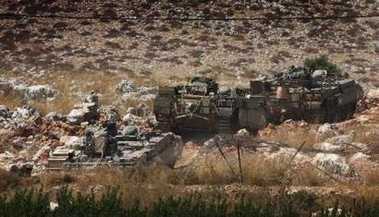
The title of the pic says it all (hehehe). Its an AP photo of a T-55 medium tank modified into an infantry carrier, armored personnel carrier rumbling through a wire fence at an unpredictable spot to avoid land mines (roadside bombs, IEDs latest CYA buzzword) and up steep terrain covered in large rocks. We have similar terrain at Fort Irwin, NTC in California, and this is NO-GO terrain for wheeled trucks especially those weighted down by a thin steel body and a lot of crap inside (LAV-III "Strykerrrrs" and "armored" Humvees). The Azchariot at 40 tons is at the upper limit of mobility that can traverse closed terrain. Lebanon is OPEN terrain until you get to city streets, so it makes sense to have the heaviest APCs/IFVs and tanks you can get because you are exposed to every kind of enemy fire imaginable. However, if you are in CLOSED terrain like Vietnam, your medium tank like a M48 with a 90mm gun turret is not going to be as mobile as the M113 Gavin light tracks that can zip across rice paddies.
The point about wheeled trucks like "Strykerrrrs"/Humvees with high ground pressures due to absurd inadequate attempts at armoring is that they are only mobile over the most FAVORABLE of open terrain; paved roads and trails where humans have gone before and "cheated" and fought against the earth to make it easier on the wheels to roll. Roads/trails are man-made strips of open terrain, easily anticipated by enemies to lay landmines and direct/indirect fire ambushes. The IDF is very wise to avoid such ambushes by using TRACKED armored vehicles...and even though cash-strapped refused BS "Strykerrrr" trucks even if given to them by the GDLS-corrupted U.S. Government!
Afghanistan/Iraq: U.S. Army and marine Wheeled Failures ignored, NATO Allies L-E-A-R-N: LAV-3/Strykerrrrs fail in Afghanistan and the Canadians ditch their own wheeled trucks they make for more mobile and better armored tracks!
Enter the Leopards and M113 MTVL Gavins!
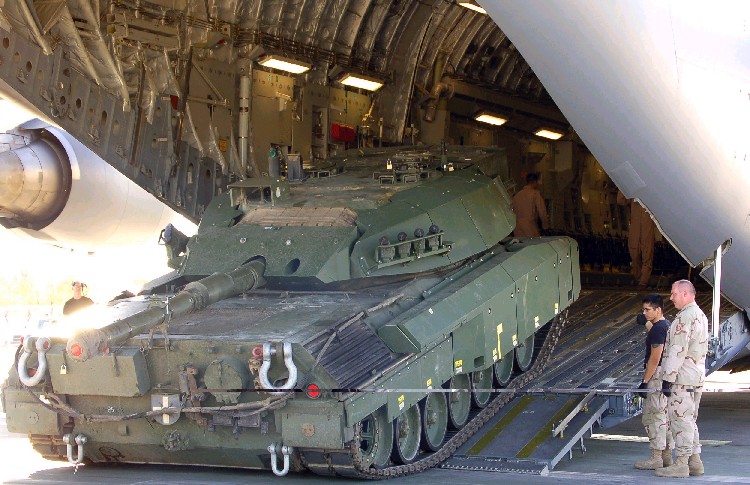
 www.youtube.com/watch?v=GrATZkFUhaI
www.youtube.com/watch?v=GrATZkFUhaI
50 x 11-ton Canadian M113A3 Gavin "TLAVs" light tanks in Afghanistan with 42-ton Leopard C2 medium tanks in Combat
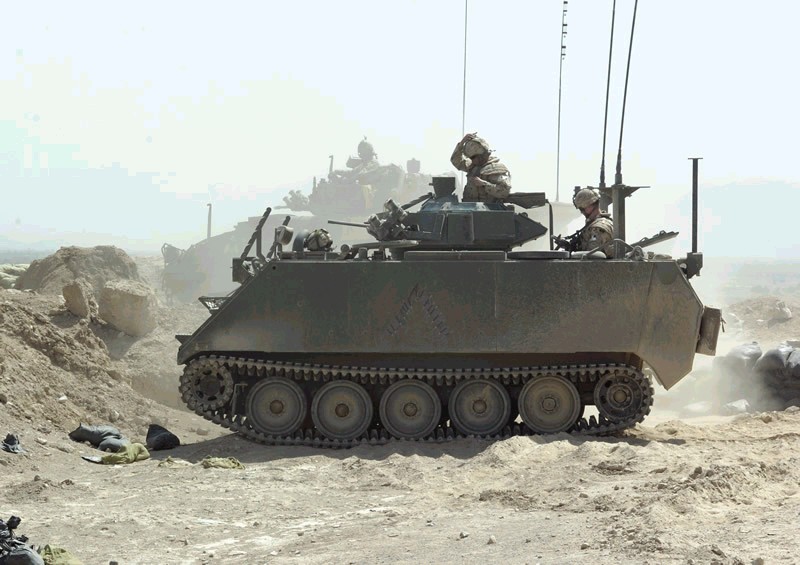
AR2007-A051-0261
15 May 2007
Kandahar, Afghanistan
A Tracked LAV (TLAV) manoeuvres into position at Forward Operating Base Ghundi Gar. Having arrived as an escort for a resupply convoy the TLAV now takes up position as part of the Hotel Company Combat Team of the 2nd Battalion Royal Canadian Regiment Battle Group, currently in this location as part of OP HADRIAN. 2 RCR BG is an integral element of the Joint Task Force Afghanistan.
Joint Task Force Afghanistan (JTF-Afg) is Canada?s contribution to NATO's International Security Assistance Force (ISAF) in Afghanistan. The focus of this mission is to help Afghans rebuild their lives, families, communities and nation. Canadian Forces personnel in Afghanistan are working to improve the quality of life of Afghans by providing a more secure environment in which Afghan society can recover from more than 25 years of conflict.
Photo by: Sgt Craig Fiander, JTF ? Afg, Image Technician
www.sfu.ca/casr/np-afghan-06.htm
Armoured Vehicles - NATO/ISAF - Southern Afghanistan December 2006Punching at Panjwaii: Canadian Leopard Tanks in Combat CF Tracked Vehicles Tackle the Taliban and Afghan Winters
Stephen Priestley , CASR Researcher / Illustrator
--------------------------------------------------------------------------------
In to Action: Canadian Leopard C2 tanks and the TLAV M113A3s in Combat
After a month of settling in and training, the Leopard C2 tanks of B Squadron of Lord Strathcona's Horse (RC) are on the move. On 03 Dec 2006 (Afghan time) the tanks rolled out of the Kandahar Airfield compound heading for Panjwaii District. The Leopards form a new direct fire unit capable of punching through the thick, mud-brick walls (left) that typify much of Panjwaii District and caused Canadian troops problems during Operation Medusa.
Images from Kandahar reveal details about the deployed Leopard C2s. As many as ten tanks are visible (right) all fitted with MEXAS armour kits more than previously said to exist and at least one Leopard each is fitted with a dozer blade (right, front vehicle) or with a mine rack (topmost image, front vehicle).
The Leopard C2s aren't the only tracked armour in southern Afghanistan. The first Leo airlift included a Taurus Armoured Recovery Vehicle (ARV). There are also at least two AEV (Armoured Engineering Vehicle) Badgers joining the fight in Panjwaii (left). Both these specialist vehicles are based on a Leopard chassis. Light tracked vehicles also accompany the heavy armour. It had been announced that 40 rebuilt TLAVs would go to Kandahar in 2007. It seems some arrived early.
Images of M113A3s in Afghanistan have been of poor quality so far. [1] The TLAV's rooftop remote-control armament has been covered until revealed, we must assume that PWS (Protected Weapons Stations) have been mounted. M113A3s will act as infantry section carriers. The arrival of tracked LAVs is well-timed ¡V winter rains are turning the Afghan dust into mud.
The tracked vehicles address some of the mobility limitations that were encountered with LAV IIIs during Operation Medusa [2] which will be worsened by the winter conditions. More important is the Leo's greater firepower within a day of arriving at Foward Operating Base Masum Ghar, the Leopard's 105s were returning fire on Taliban rocket launcher positions.
Journalists contrast upgraded Leopard fire control, sights, and protection with the cruder systems of the Soviet tanks defeated by Afghan Mujahideen in the '80s. Quite true but parallels can be drawn with Northern Alliance tanks (left) in 2001 T-55s used as mobile, direct-fire artillery. A Leopard firing from its FOB revetment is simply more sophisticated kit doing the same job.
The CF sees other roles for the Leopards in Afghanistan (among them protecting convoys from attack) but, in Part 2, we will focus on mouseholing mud-brick walls.
----------------------------------------------------------------------------
[1] ¡¥Life-extended¡¦ TLAV (M113A3 and long-wheelbased MTVL) emphasized new armament arrangements ¡V either RWS (Remote Weapon Systems) or ¡¥One Metre¡¦ turrets (recycled from AVGP Grizzly section carriers). The former is probably the Rafael PWS as planned but may also be the Kongsberg M151 RWS (as on APVs).
Another M113 type in theatre is the remote mine-clearing ILDS Protection Vehicle.
[2] LAV IIIs had difficulties with Panjwaii mud-brick compounds and its irrigation ditches. Tracked M113A3s [without heavy caliber guns] will cope better with the latter but not with the former.
The Dutch are using M113 Gavin tracks, too and are being VERY successful in counter-insurgency operations!
 www.youtube.com/watch?v=ZKa3tK3zi4c
www.youtube.com/watch?v=ZKa3tK3zi4c
The British are using Bv10S Vikings and Scimitars....
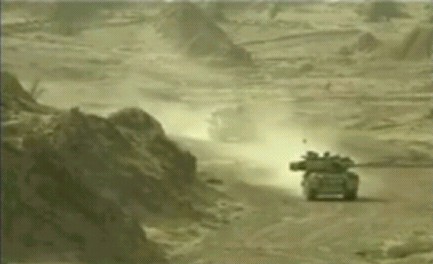
 www.youtube.com/watch?v=KbE63uMtPoo
www.youtube.com/watch?v=KbE63uMtPoo
German Wiesels in Afghanistan: they Knew to Use Tracks All Along!
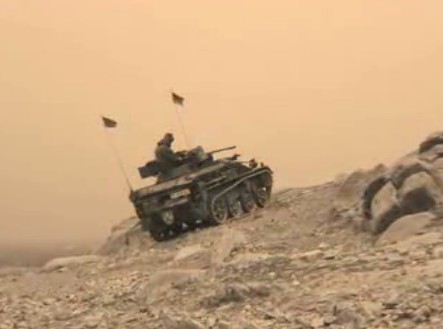
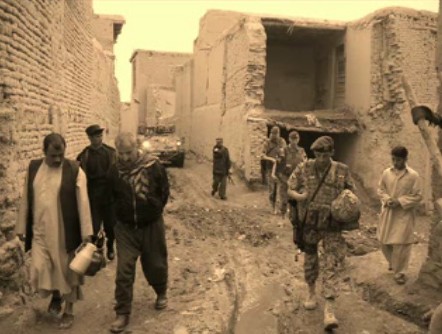
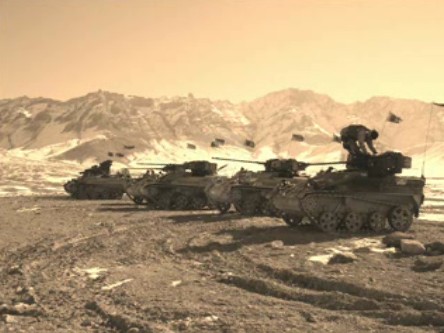
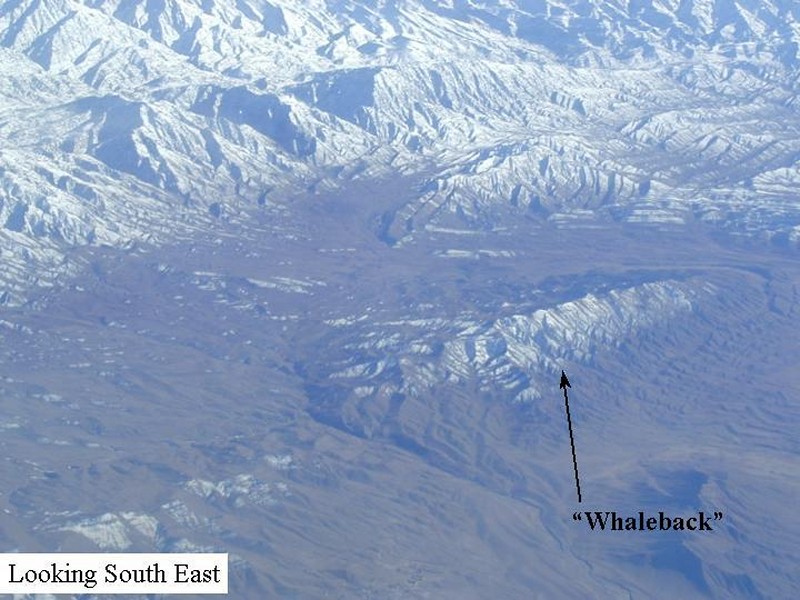
What caused the NATO turn-around from wheels to tracks?
COMBAT.
REALITY.
AFGHANISTAN.
A DESIRE TO WIN, NOT CONTINUE TO LOSE IN WHEELED TRUCKS...
EXPERIENCE ONE FAILURE DAY IN THE LIFE OF A FUBAR LAV-III/Strykerrr UNIT....
Strykers fail: VIDEO of Canadian LAV-IIIs hopelessly stuck in mud, breaks main bearing, mission aborted
American Stryker versions of the LAV-III are even more bloated and weighted down with bird cage and electronics inside....why are we wasting $4M on each of these flat-bottom, road-bound trucks?
From the recent PBS documentary, "Afghanistan: the Other War"
Go to 2:58 and see why the Canadians have gone to tracks in Afghanistan like other smart armies, Brits, Dutch etc.
Canadian LAV-IIIs hopelessly stuck in mud, breaks main bearing, mission aborted
 www.youtube.com/watch?v=ZandbBaUw_U
www.youtube.com/watch?v=ZandbBaUw_U
We need to stop wasting billions on fatally flawed break-down-prone wheeled Stryker trucks that fail to get the job done and put our men into constant road/trail ambushes and put our money into M113 Gavin light for cross-country mobility but medium-weight in armor protection tracks that don't get stuck and break down in a mere light rain and minor mud.
STILL PHOTOS OF THE LAV-III DEBACLE IN AFGHANISTAN (AMERICANS EXPERIENCE THIS DAILY, TOO)
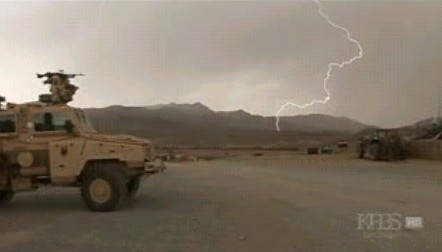
2: "We are going to make contact with a new village and reach out to them and win over their hearts and minds in our low-maintenance, all-terrain, high-speed SASO wheeled vehicles. Our LAV-IIIs are used by the Americans who call them 'Strykers'".
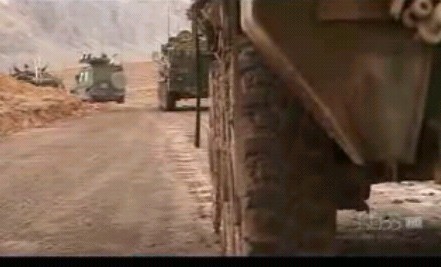
3: "WAHOO! Look at Me! I'm going 60 miles per hour on the road!!" (Not for long!)
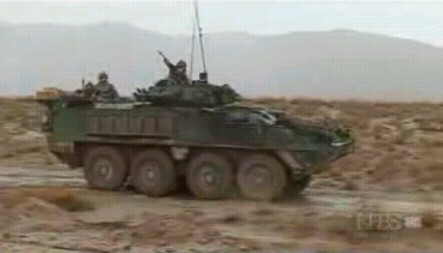
LAV-III stuck a 1st time; Road Speed: 0 MPH
4: "Ohhh....sh$%^&! I drove into a rut....."
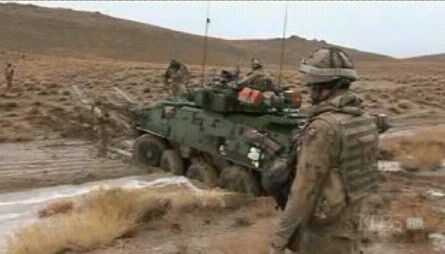
5: "Can we get it out?"
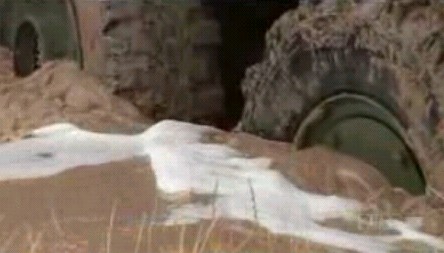
6: "We had technical difficulties and had to cancel the mission to the village"
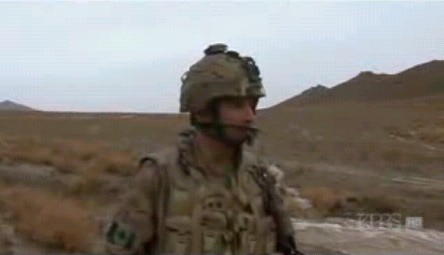
7: "What's that dangling underneath the LAV-III?"
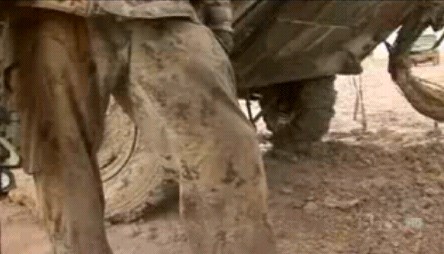
8: "Oh No. Its the main bearing. Its broke, man. This thing won't run its trashed."
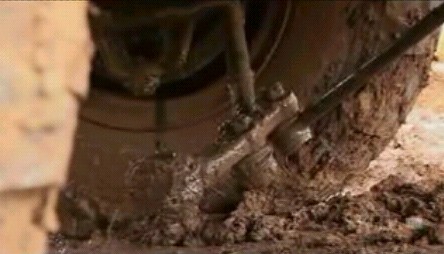
9: "What a Piece-of-Shit (POS)."
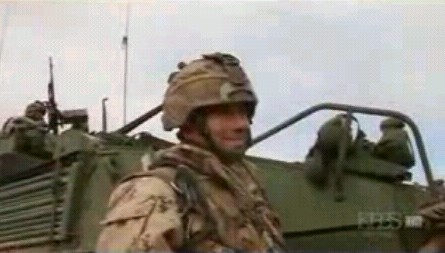
10: "Careful! Don't get the 'recovery' LAV-III stuck, too!"
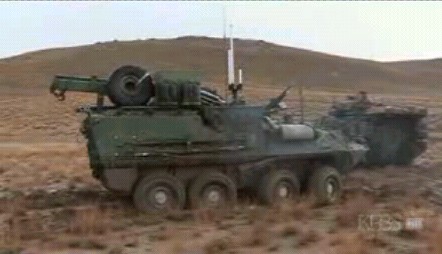
11: "Oh Boy. The 'recovery' LAV-III is spinning in the mud, too."
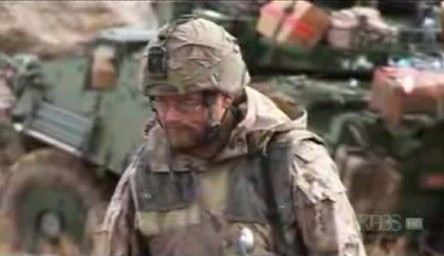
12: "Please...please grip...grip....we don't want to be stuck here outside the wire when the sun goes down..."
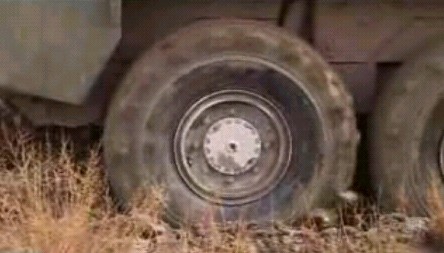
LAV-III stuck a 2nd time
13: "Gun it!!! Get through the dip!"
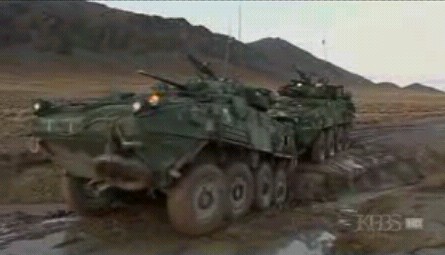
14: "Damn! We are Stuck Again! Dude! It's Getting Dark!"
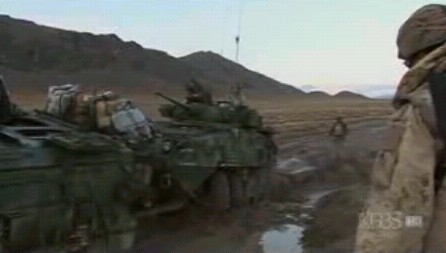
15: "We Got to get Back to the FOB before the Taliban come out!"
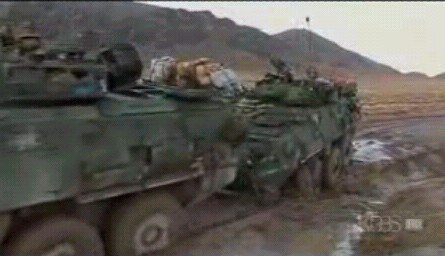
16: "Go Easy! Easy! Let the Wheels Catch!"
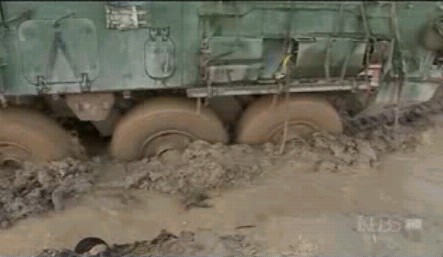
17: "Damn. Forget it. Cut the Engine!"
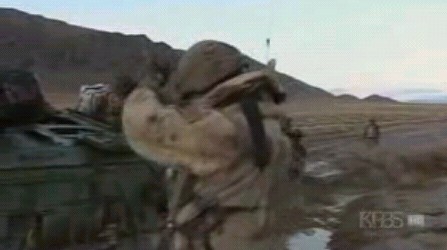
18: "Mission Aborted! Maybe an officer will figure this out."
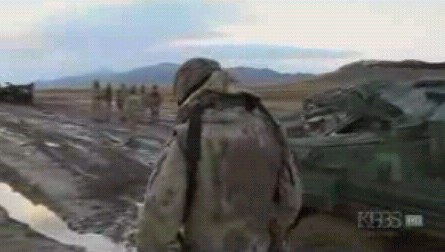
"We REALLY showed our Afghan allies today why they should trust their very lives to us.
Yeah, Right. We need to turn these pieces-of-shit in and get tracks so we can win"
http://oruzgan.web-log.nl/uruzgan_weblog/canada/index.html
The deadly roadside bombs have killed 22 of the 26 Canadian Soldiers who have died in Afghanistan over the past six months.But tanks tend not to be the target of choice for the Taliban because of the protection they offer to those inside.
Lt.-Col. Stephane Lafaut, the incoming commander of the Operational Mentoring and Liaison Team in Afghanistan, said Tuesday that IEDs tend to be used more by the Taliban to target other vehicles -- such as Canada's LAV3, Nyala and Bison armoured vehicles -- instead of tanks.
Liars say road-bound LAV-IIIs protect against land mines: Quebec Soldier Killed as Result
There are still some wheeled trucks being foisted upon our fighting men...
www.nationalpost.com/story.html?id=b002bedc-45bb-4507-804d-5979f92f4320&k=70419
Private Simon Longtin first Van Doo killed in AfghanistanAndrew Mayeda, CanWest News Service
Published: Sunday, August 19, 2007KANDAHAR, Afghanistan -- Quebec's storied Van Doos regiment is mourning its first loss in Afghanistan after a young private who arrived in the country only three weeks ago was killed by a roadside bomb.
Pte. Simon Longtin, 23, was travelling in a LAV-III armoured vehicle when it struck an improvised explosive device.
Canadian Soldiers exchanged fire with Taliban insurgents after the blast, but no other Canadian Soldiers were injured and no Taliban casualties could be confirmed.
Pte. Longtin was evacuated by helicopter to a hospital at Kandahar Airfield, but was pronounced dead upon arrival.
He is the first member of the Van Doos to be killed while serving in Afghanistan. The Royal 22nd Regiment, as it is officially known, took command of Canada's operations in Afghanistan on Aug. 1.
"It's like losing almost a brother. We're like a big family here," said Col. Christian Juneau, Canada's deputy commander in Afghanistan. "We will mourn, we will pay our respects to the family and our fallen comrade, and we will carry on with the mission."
Pte. Longtin, who hails from Longueuil, Que., was an infantry rifleman with Charlie Company, which forms part of Canada's battle group.
He had trained for two years with the company before arriving in Afghanistan about three weeks ago.
He lived with other members of the company at Masum Ghar, a forward operating base located at the border of the volatile Zhari and Panjwaii districts.
Lieut.-Col. Alain Gauthier, commander of the Canadian battle group, called Pte. Longtin a "keen," "professional" Soldier.
Sunday, Maj. Kasey McLean, speaking the base in Valcartier, Que., said Longtin's family said it was proud he served.
Maj. McLean, a Van Doo commander, said the family told him Pte. Longtin would "often express his pride and belief in what he did."
He said the family wished to mourn in private and would issue a statement later.
Political observers, meanwhile, will be watching closely to see how the news reverberates in Quebec, where support for the war is the lowest of any province.
According to some polls, seven in 10 Quebecers oppose the mission.
The attack occurred at about 1:41 a.m. along Foster Road, roughly 20 kilometres west of Kandahar City.
The vehicle was part of a supply convoy headed west toward Masum Ghar.
It is the second time in a week that Canadian Soldiers have been wounded or killed along Foster Road, a well-travelled supply route. Five Soldiers were lightly injured last Sunday by an IED along the same road. After that attack, the military dispatched engineers to scour the route for IEDs.
The engineers checked for bombs in drainage culverts where insurgents are believed to have planted the bomb used in last Sunday's attack. At one point, engineers discovered a Chinese-made mortar in one of the culverts. They detonated the bomb safely, setting off a thud that echoed through the nearby mountains.
Juneau said Canadian troops will step up surveillance of the route. "However, with the size of our operation, it's quite difficult to have eyes everywhere ... You travel on the road, (and) the next night they can insert themselves and install an IED."
Military officials declined to provide details on the nature of the bomb, saying the incident was under investigation. They also would not say where Longtin was sitting in the LAV-III, which is designed to protect against roadside bombs.
The death of the first Van Doos caps a bloody week in Kandahar province.
Two Soldiers incurred minor injuries Friday after their armoured vehicle rolled over an IED while traveling in a supply convoy about 30 kilometres west of Kandahar City. A suicide bomber also killed the chief of Zhari district and three of his children. On Saturday, a suicide car bomber rammed into a convoy of vehicles, killing at least 15 people and injuring dozens of others on the edge of Kandahar City.
Some observers believe the insurgents could step up their attacks when the Muslim holy period of Ramadan begins in a few weeks.
On Saturday, the Taliban released a statement purported to be from their reclusive leader, Mullah Omar. It called on Afghans to wage a jihad against the foreign "invaders." The statement came on the eve of Independence Day, which commemorates Afghanistan's declaration of independence from Britain in 1919.
"Our country is once again occupied by the same forces," Omar said in his statement, which has not yet been verified.
Sixty-seven Canadian Soldiers and one diplomat have now died in Afghanistan since 2002. There are roughly 2,500 Canadian troops stationed in Afghanistan as part of the NATO-led coalition that is attempting to secure and rebuild the country.
Canada's military commitment ends in February 2009. Prime Minister Harper has said he will seek a consensus from Parliament before extending the mission.
Juneau said the debate about whether to extend the mission should be left to politicians and the Canadian public.
"The important thing for us, the Soldiers, the whole team that is deployed here, is the fact that we know the Canadian public is behind the Soldiers, the people wearing the uniform."
On Sunday, Prime Minister Stephen Harper issued a statement on the latest death.
"It is with deep sorrow that I extend my condolences, on behalf of all Canadians, to the family and friends of Private Simon Longtin, who was killed in Afghanistan."
"Private Longtin displayed resolve and courage in serving his country, his family and friends can be proud of him because he was playing a very important role in a very challenging environment. He will be sorely missed by the Canadian Forces family."
"In marking the 65th anniversary of the Dieppe Raid, we pay tribute to the Soldiers of our past. The sacrifices of Soldiers like Private Longtin carry on this legacy today, helping to bring stability and peace to parts of the world plagued by turmoil and upheaval."
Liberal Leader Stephane Dion also issued a statement.
" . . . I would like to express my deepest sadness and regret at the death of Private Simon Longtin in a roadside bombing in Kandahar.
"We send our most sincere sympathies to Private Longtin's family, comrades and friends as they cope with this tragic loss. Our thoughts and prayers are also with the seven other Canadian Soldiers injured in Afghanistan this week. We wish them a full and speedy recovery.
"Today's loss serves as a reminder of the very real challenges the men and women of the Canadian Forces face every day as they undertake this mission, and I speak for all Canadians when I say that we greatly appreciate their sacrifices to help the people of Afghanistan and bring stability to the region."
Defence Minister Peter MacKay said in a statement Longtin was an exceptional Canadian Soldier who made the "ultimate sacrifice."
"He served valiantly, and represents Canadian values and traditions in the finest sense.
"Our mission in Afghanistan is noble and in our national interest, and we will forever honour our troops who put themselves on the line to defend those interests and make a positive difference in the lives of others."
www.herofund.ca/?cat=74
Name: Master Corporal Christian Duchesne
Age: 34
Died: August 22, 2007
Hometown: Montreal, Quebec
Children: Three daughtersUnit: 5th Field Ambulance (Valcartier, Quebec)
Master Corporal Christian Duchesne was a member of the 5th Field Ambulance, based at Valcartier, Quebec. Duchesne was killed when his armoured, LAV-III vehicle struck an improvised explosive device in southern Afghanistan.
www.herofund.ca/?cat=51
Name: Private David Robert Greenslade
Died: April 8, 2007
Age: 20
Hometown: Saint-John, New Brunswick
Children: noneUnit : 2nd Battalion, The Royal Canadian Regiment, (Gagetown, New Brunswick)
Private Greenslade was killed with five other Canadian Soldiers, when their LAV-III armored vehicle hit a roadside bomb. Greenslade was a member of the 2nd Battalion, Royal Canadian Regiment.
These are NOT new realities.
The U.S. Army in WW2 Learned the Hard Way that Wheels must be replaced with Tracks
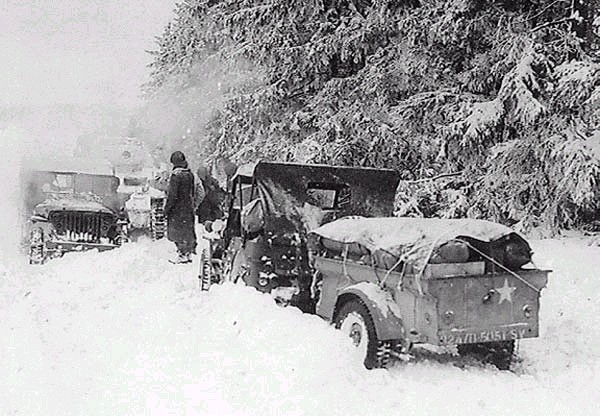
TRACKS MOVE: 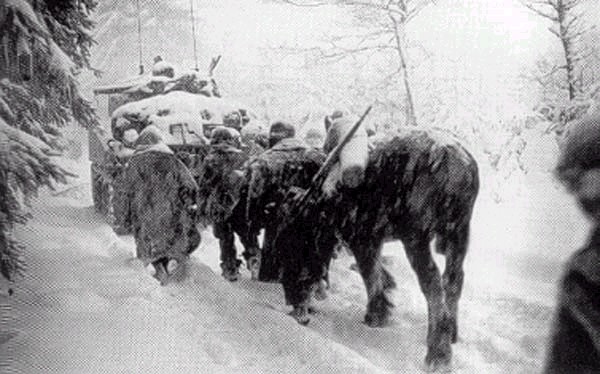
Australian M113AS4 Gavin in action: mud all the way up doesn't stop it...
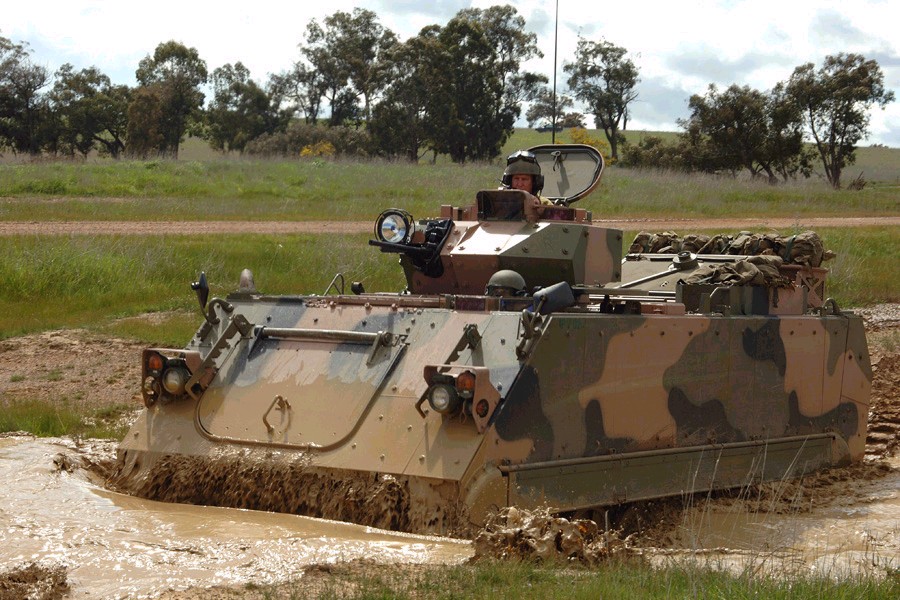
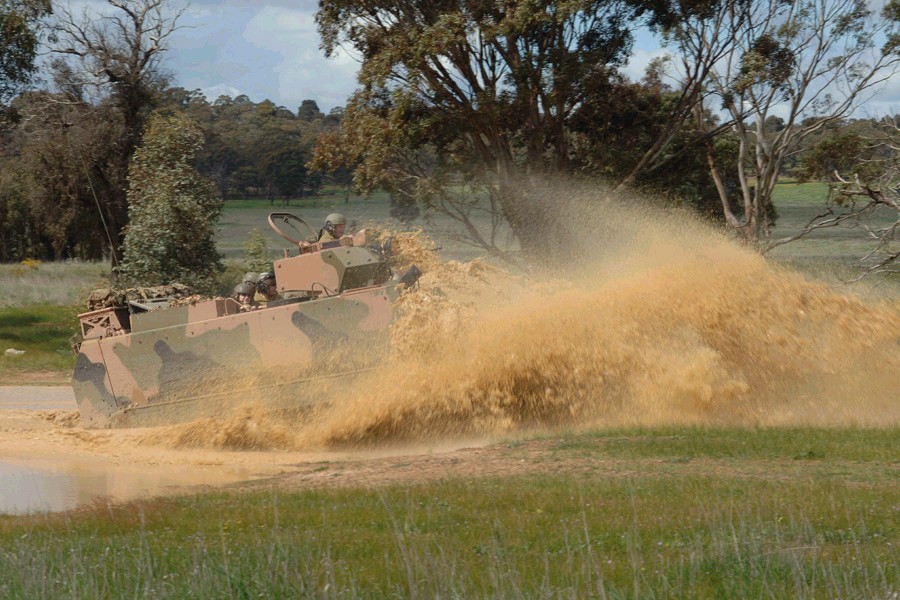
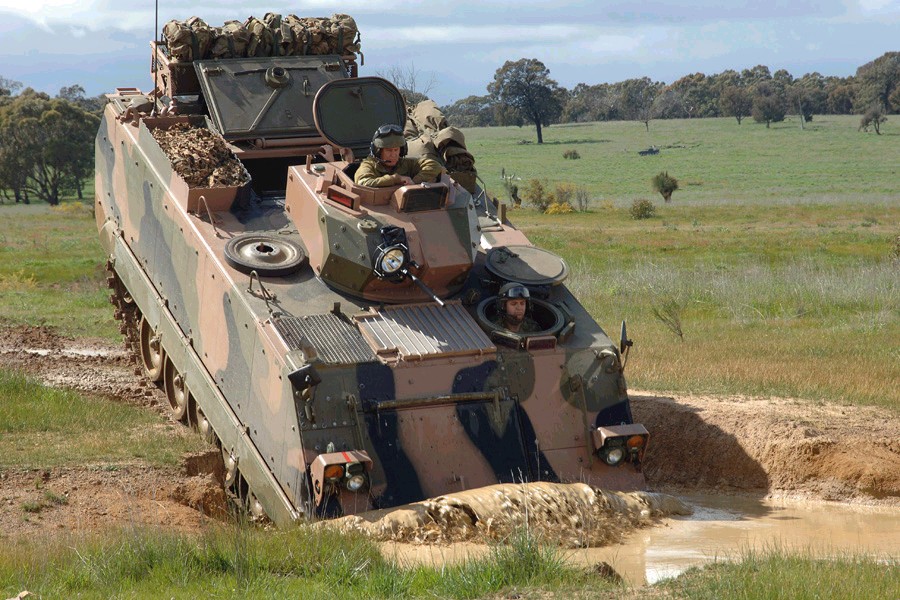
The U.S. Army has known as an institution that tracks are better than wheels yet the ARROGANCE of today's techno-narcissists knows no bounds, they can conjure up capabilities for their wheels without any experiencial or factual reality checks. Everything that is "old" is dismissed out of hand in snobby condescension as if the planet earth gives a hoot about what era the humans ascribe to themselves...
Another fundamental miscalculation on the part of current RMA/Toffler-obsessed U.S. Army officials is that wheeled armored vehicles are 28% less space/weight efficient than tracked armored vehicles. Read Paul Hornback's article in U.S. Army ARMOR magazine. However, in 1999 despite many warnings and continuing to the present day, current Army officials have willfully ignored the FACTS to perpetuate their narcisisstic wheeled egomaniac agenda. These power point series shows how this truth while may be "counter-intuitive" to the uninformed has been bringing disaster in Iraq where our men have been getting clobbered in vulnerable wheeled trucks while thousands of more protected M113 Gavin light tracks that could save their lives sit in storage. This is due to Army officials' egomania and inability to admit they are wrong, so men continue to die and get maimed.
DoD report on the Federation of American Scientists (FAS) web site reveals that thin-steel armored cars deteriorate quickly and are hard-to-maintain in the real world where their heavy weights press down on complicated, fragile drive trains, suspensions and gear boxes as this slide show illustrates:
"Formal studies have concluded that the LAV structural integrity is sustainable at least through 2015. However, O&S cost driver studies indicate supportability costs are growing at an alarming rate""
www.fas.org/man/dod-101/sys/land/lav.htm
The M113 Gavin light tracks are and have always been the solution for 3D maneuver
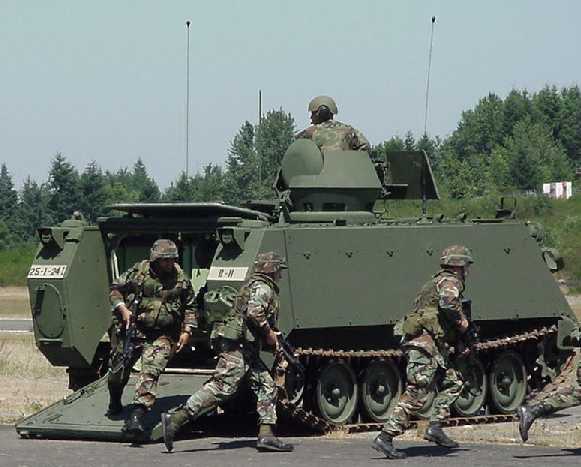
The marine LAV-1 is falling apart from use since 1987...meanwhile the U.S. Army's M113 Gavins have been serving since the 1960s and upgraded; still effective with no point where structural integrity will cause retirement. The reason is that the M113 Gavin is a superior design than trying to force an armored car to try to be an off-road combat vehicle (which it is not). By being lighter on its running gear, the M113 Gavin suffers less stress on itself and it keeps on running decade-afer-decade while the LAV jars its complicated drivetrain and steering into breakage. The M113A3 Gavin can run on metal tracks with rubber pads to be robust to maneuver against enemy Surveillance Strike Complex fires or be fitted with band-tracks and possibly hybrid-electric drives to be stealthy quiet and even more gentle on third world country roads for peacekeeping; giving the U.S. Army world-wide strategic operational maneuver capabilities (AWSOM).
The Lav-3/"Strykerrrr" armored cars in Army use cost $53/mile to operate compared to just $3/mile to operate a M113A3 Gavin. So much the the cheapskate Army official's lust for saving money running troops around in deathtraps.
The upgraded, up-engined M113A3 Gavin will Soldier on long after the LAV-type armored cars are thrown away on the trash heap of history as the death traps they are.
Extreme Russian Tracks and Screw-Drive Vehicles
 www.youtube.com/watch?v=8VOULfira3o&NR=1
www.youtube.com/watch?v=8VOULfira3o&NR=1
Screw-drive mobile in the 1% closed terrain that tracks cannot go?
Notice no road mobility--hence the wheeled transporter
 www.youtube.com/watch?v=afJ18eJeNgU
www.youtube.com/watch?v=afJ18eJeNgU
Trailers Must Be Tracked, Too
U.S. Army in World War 2: The War in the Pacific: Leyte: the Return to the Philippines, Chapter XIV Measure of the Fighting
http://ibiblio.org/hyperwar/USA/USA-P-Return/USA-P-Return-14.html
"The 7th Division landed with seventeen [wheeled] one-ton trailers. They were found to be of little value and the division recommended that they should not be used in any future operation unless a hard-surfaced, all-weather road net existed at the anticipated target."
Solution:
 www.youtube.com/watch?v=RNuEYrJST6k
www.youtube.com/watch?v=RNuEYrJST6k
LAWS OF PHYSICS ALERT! "STRYKERRRR" TRUCK STUCK...NASA'S WHEELED MARS ROVER STUCK IN SAND DUNE
"Strykerrrr" truck stuck...and struggling to negotiate small ruts...poor design with front hull overhang...same mistake as the M114 in Vietnam....
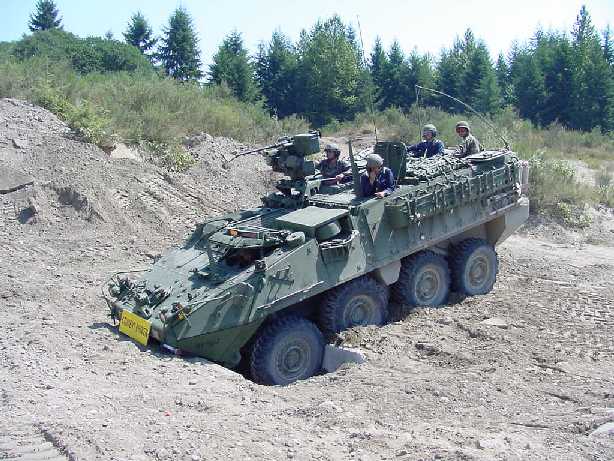
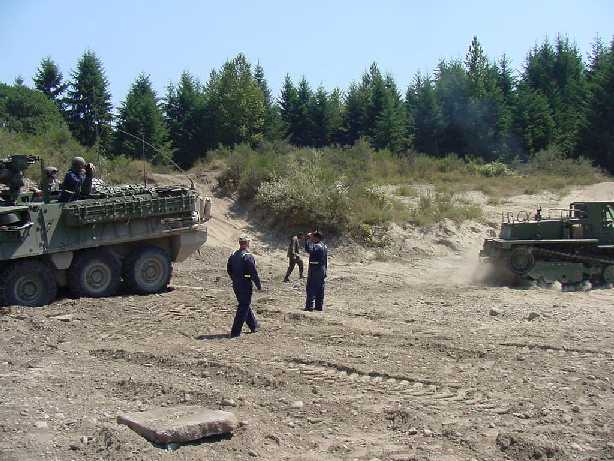
The Mars rover wasn't so lucky to have a nearby track to pull itself out. It should have been tracked. Wheeled technohubris isn't just limited to the U.S. Army and marines, huh?
http://news.yahoo.com/s/ap/mars_rovers
By ALICIA CHANG, AP Science Writer
LOS ANGELES - The Mars rover Opportunity is facing its biggest challenge since it landed on the Red Planet last year: how to get out of a sand dune where it's been stuck for two weeks.
Engineers spent this week simulating the Martian terrain at NASA's Jet Propulsion Laboratory in Pasadena to try to figure out why the robot got bogged down and how to get it moving again. Engineers performed several tests driving a dummy rover over a man-made sand dune.
Scientists sent the first new driving directions to Opportunity on Wednesday, commanding it to start inching down from the dune in a series of "mini-drives."
The six-wheeled Opportunity had driven about 130 feet of a planned 295-foot trip when its wheels started to slip April 26. The rover, going backward at the time, eventually stopped moving ¡X its wheels stuck hub deep in fine soil while trying to drive over a foot-high sand dune.
"Mars gives us surprises on a regular basis ¡X some major, some minor," said project manager Jim Erickson. "This is something we consider a major one."
In the meantime, the rover has been taking pictures of its surroundings at the edge of an area known as the "etched terrain," where scientists believe they will uncover rocks exposed by the gentle erosion of wind.
Opportunity and its twin, Spirit, have been exploring opposite sides of Mars since landing in January 2004 and have uncovered geologic evidence of past water activity on the planet. Both rovers outlasted their primary, three-month missions long ago.
This is not the first time a rover has encountered a wheel problem. In June 2004, Spirit's right front wheel became balky. Spirit overcame the problem by driving in reverse, allowing it to drag the faulty wheel while driving itself with its five other wheels.
___
On the Net:
Mars Exploration Rovers: http://mars.jpl.nasa.gov
1st TSG (A) EXCLUSIVE: U.S. Army Corps of Engineers Wheels/Tracks NRMM Study
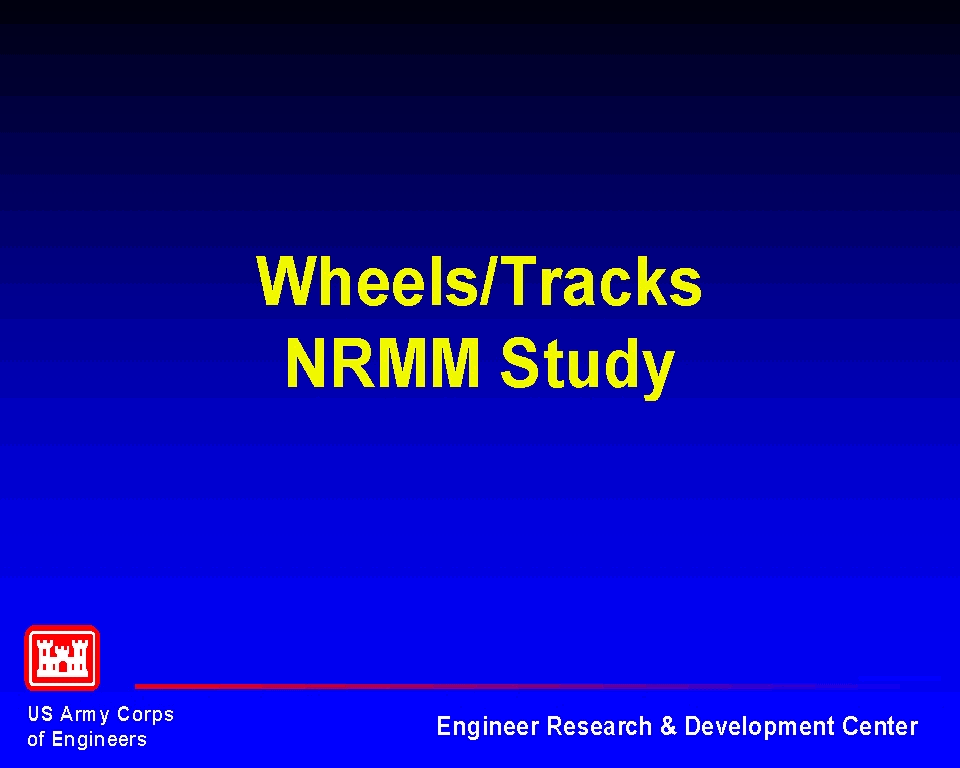
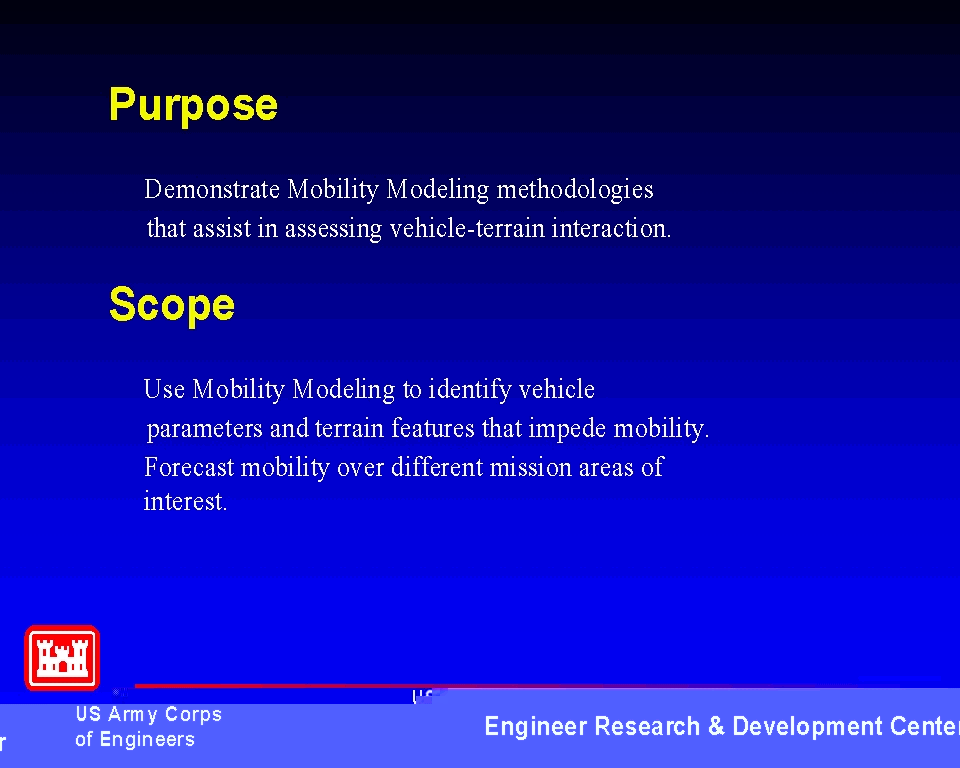
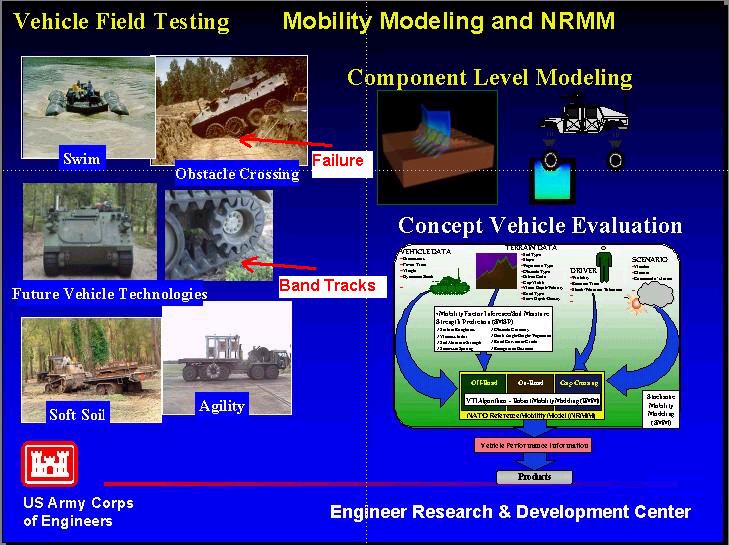
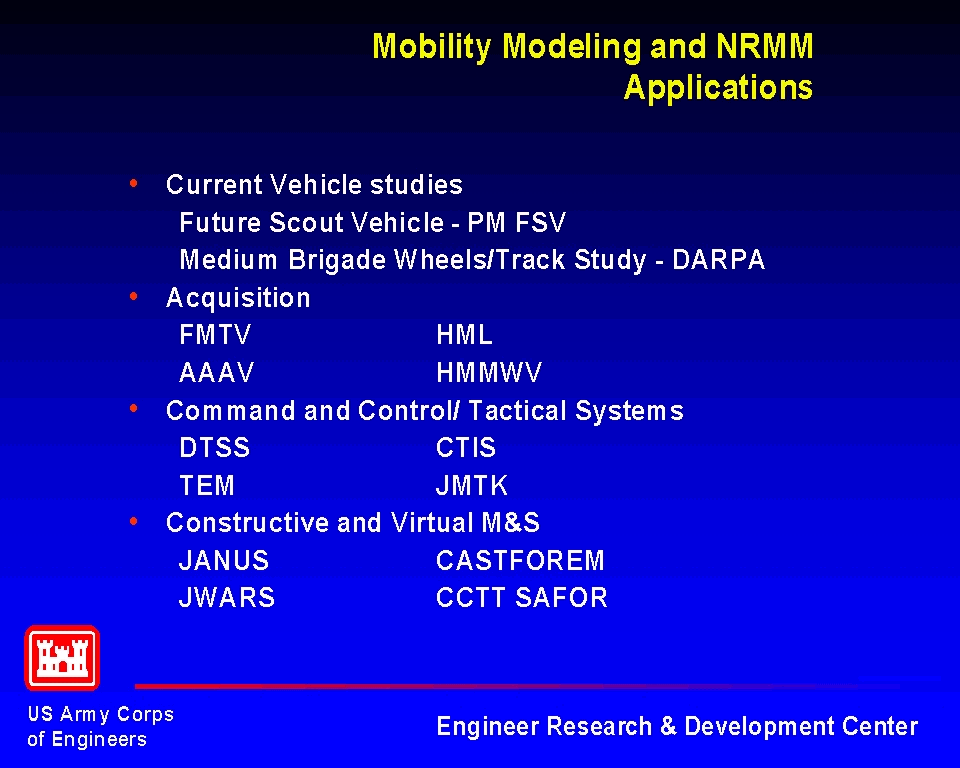
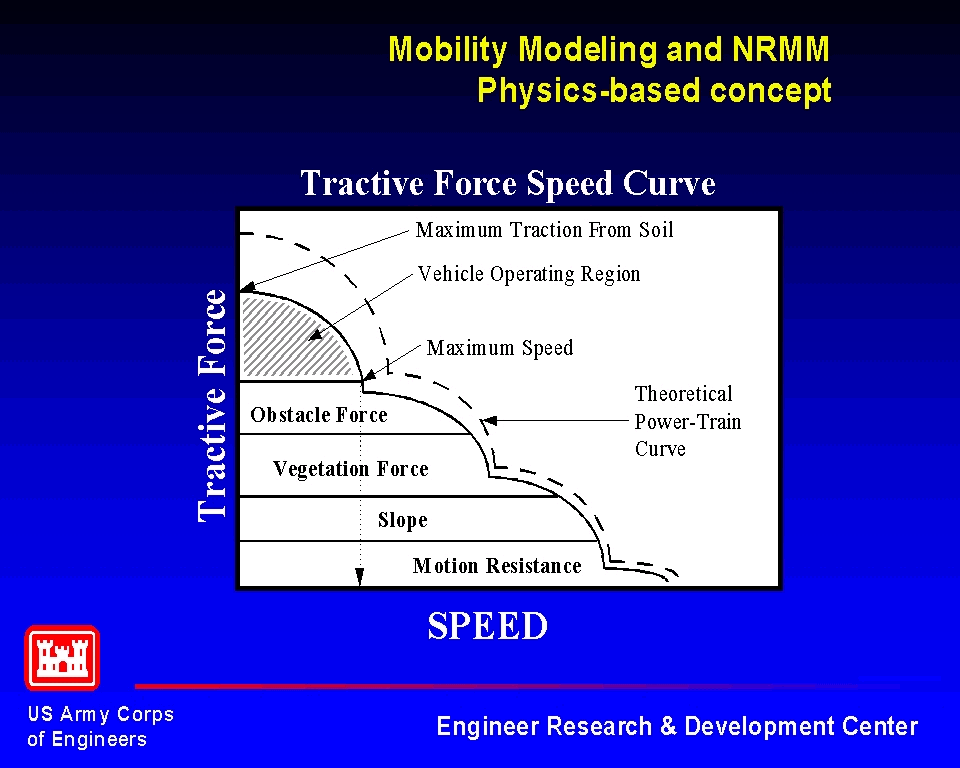
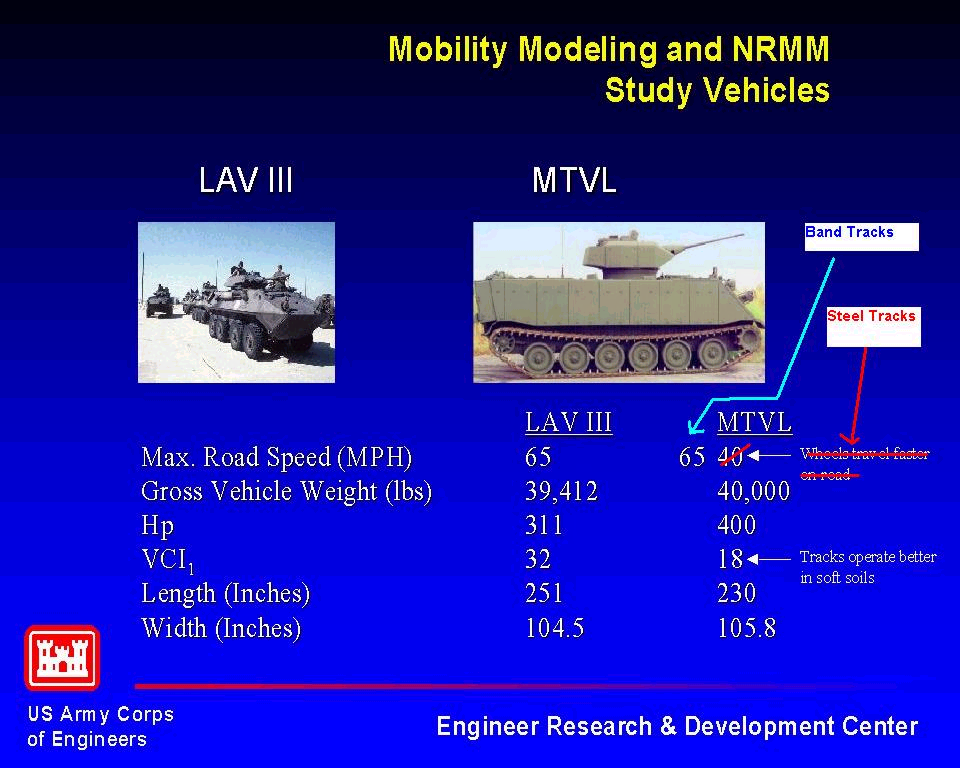

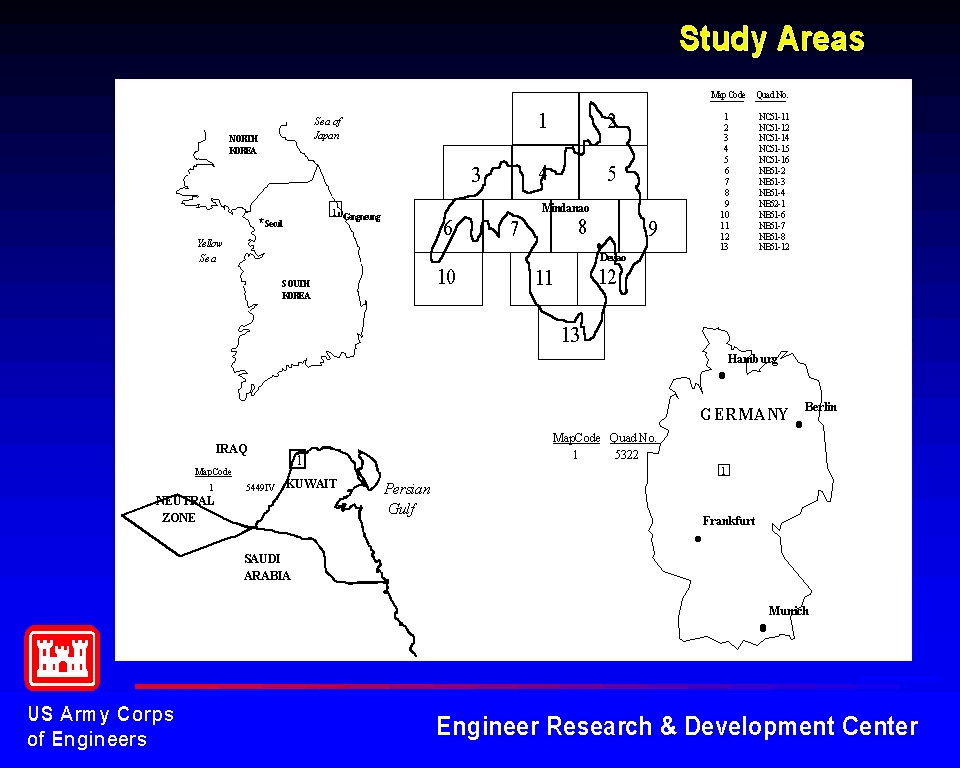
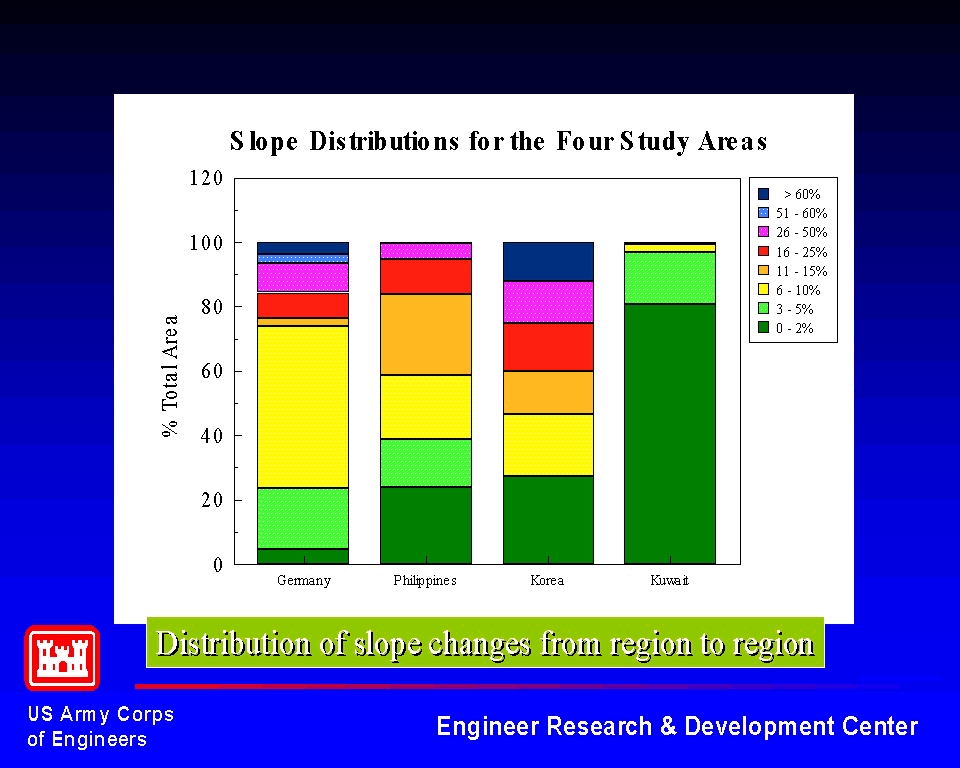
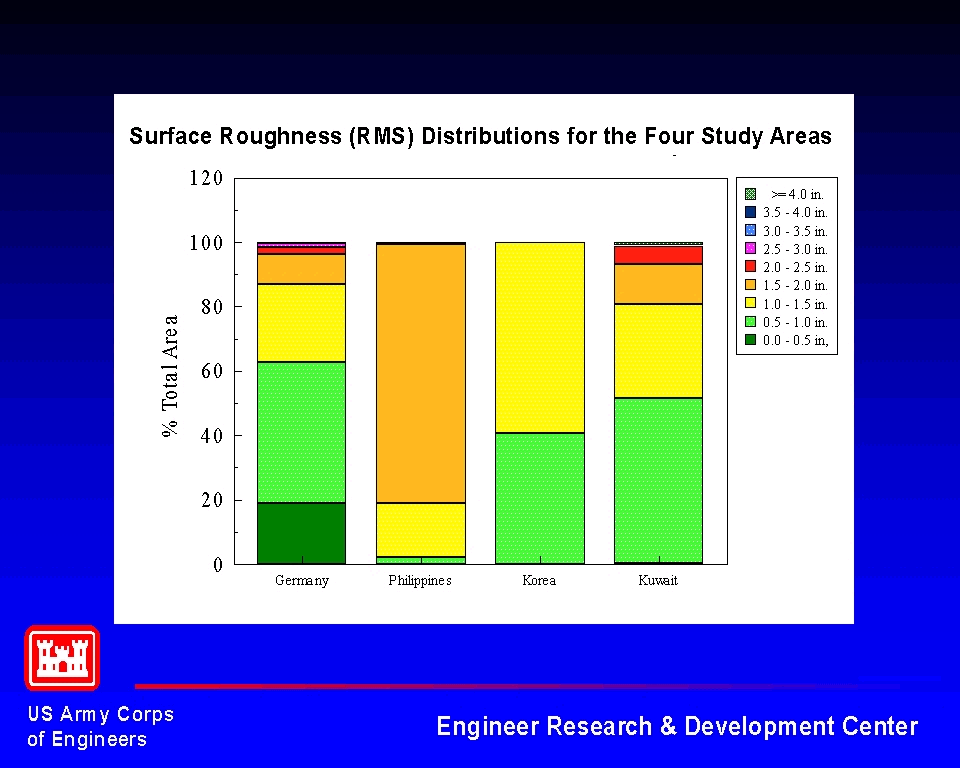
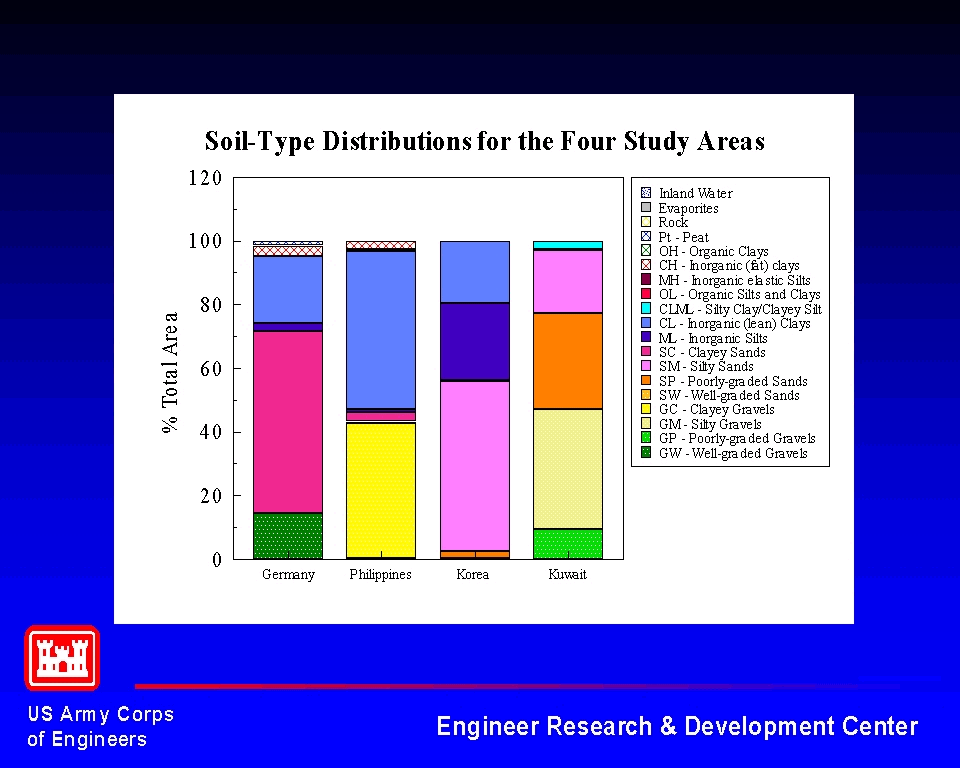
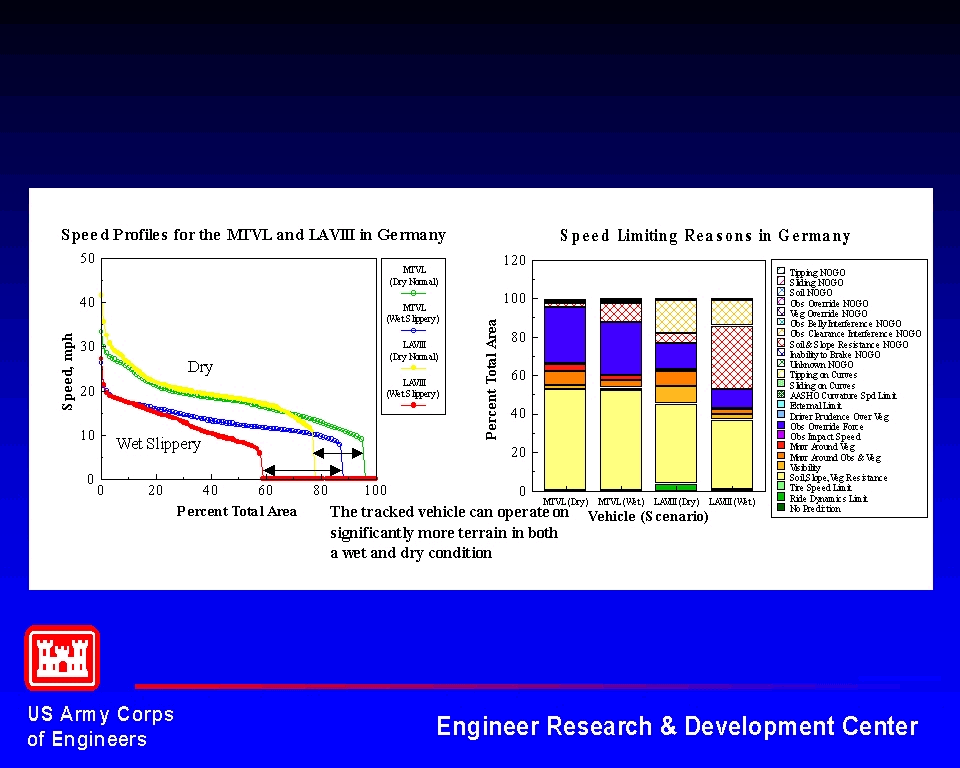
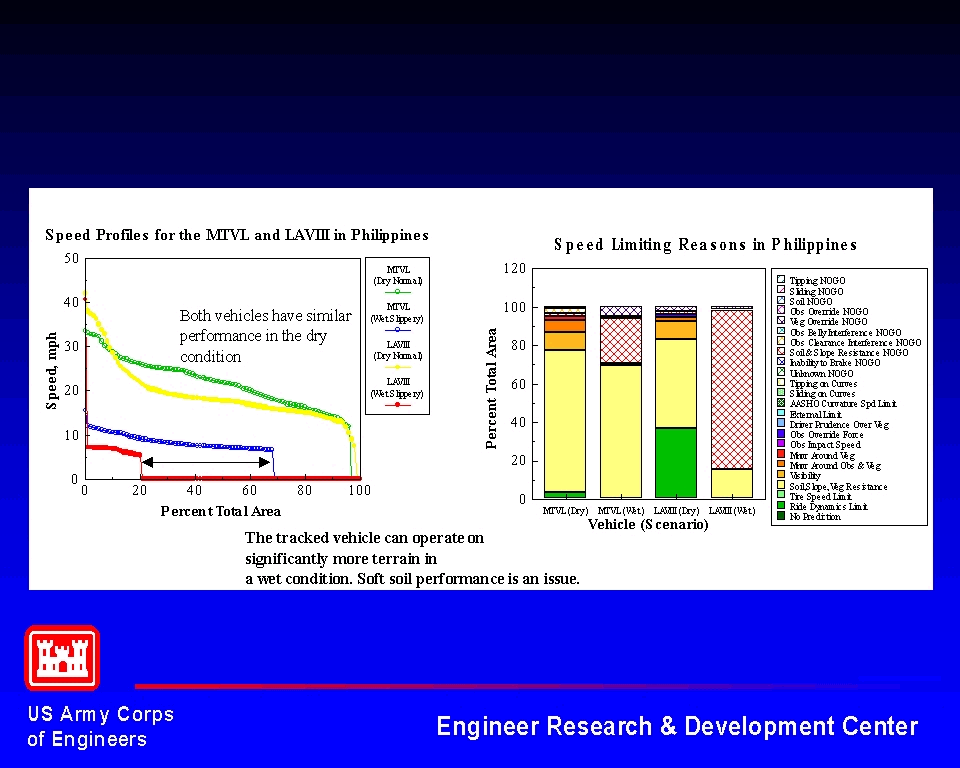
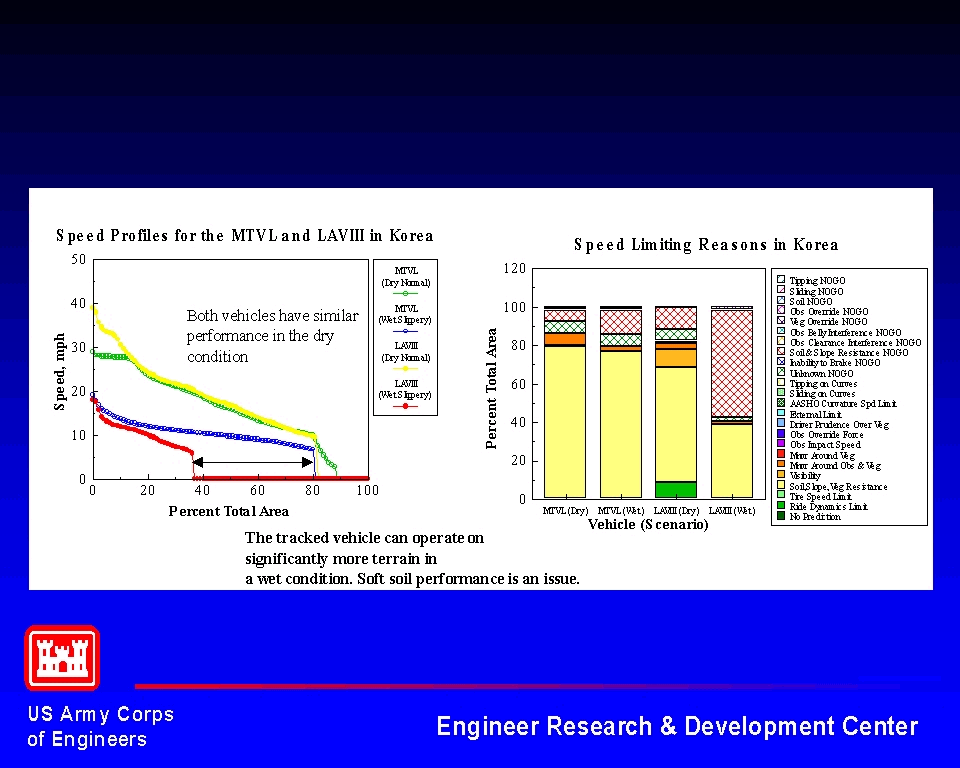
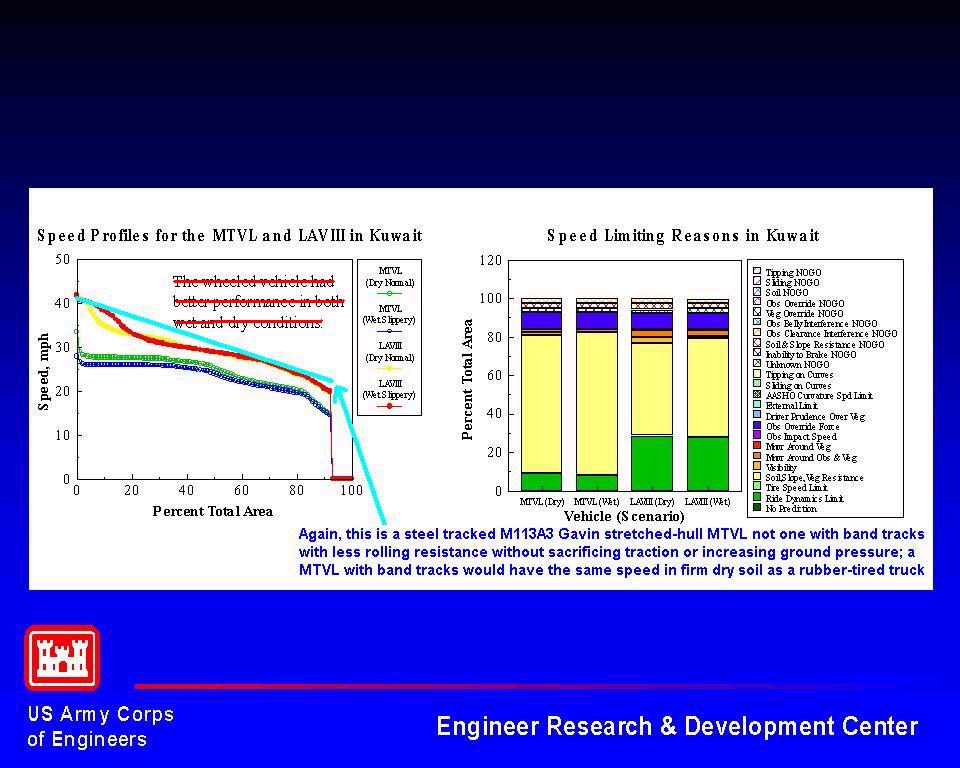
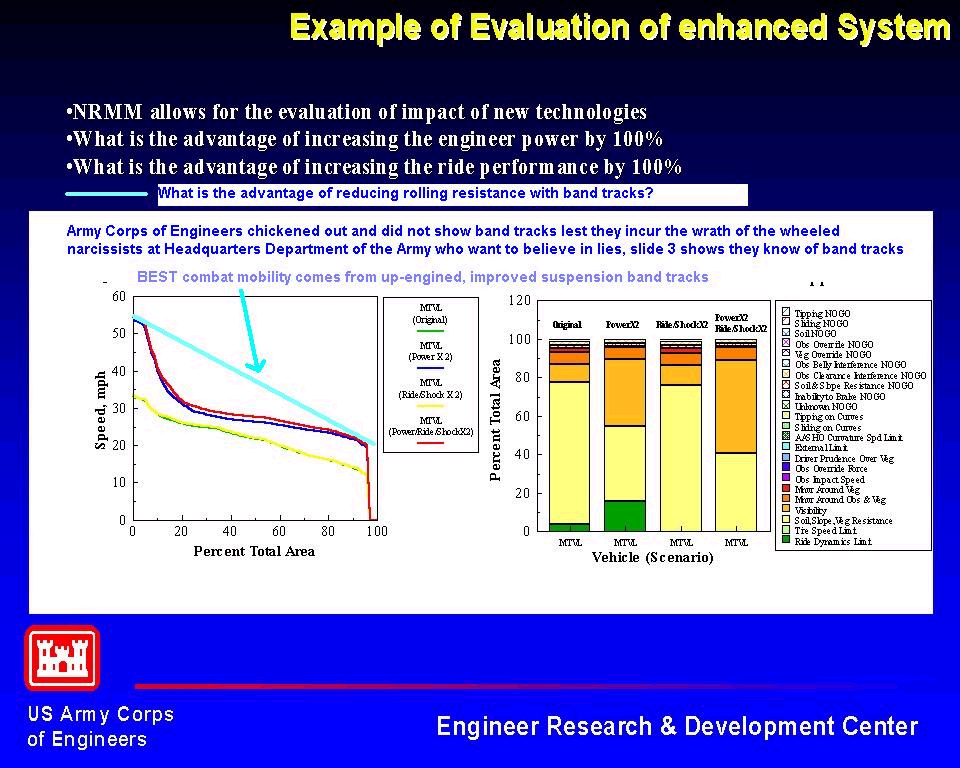
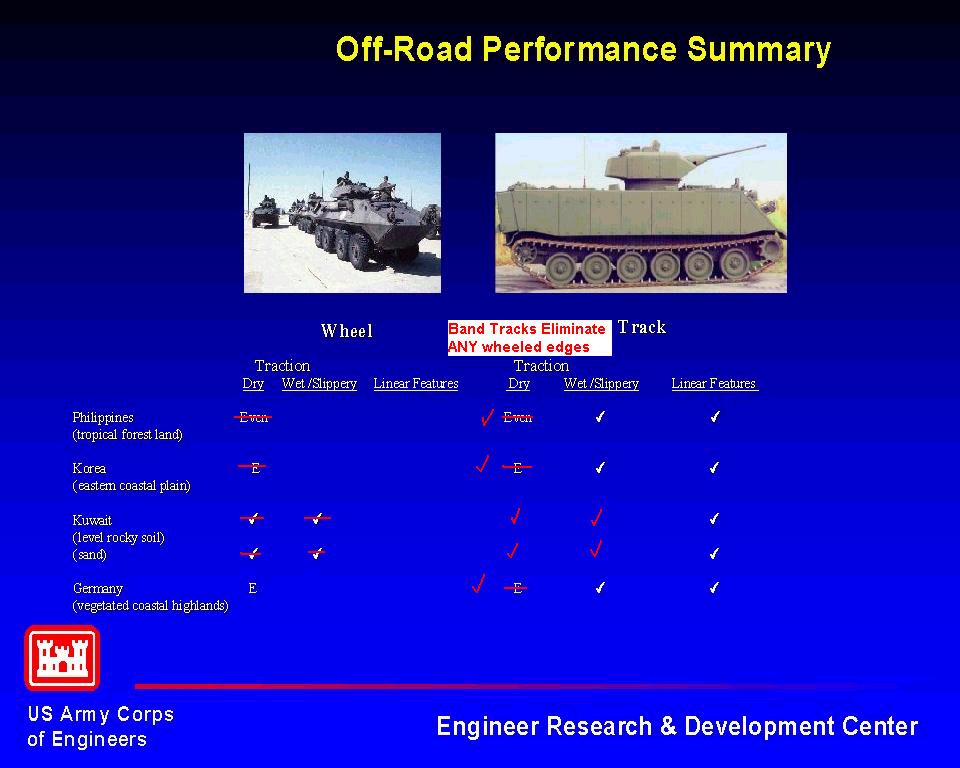
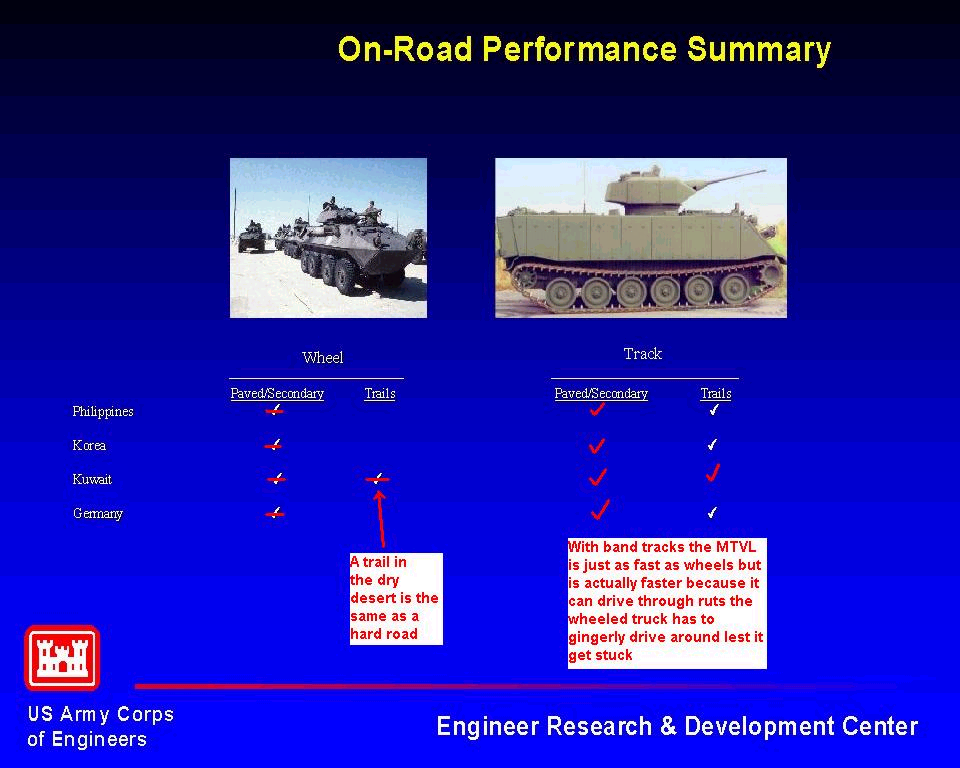
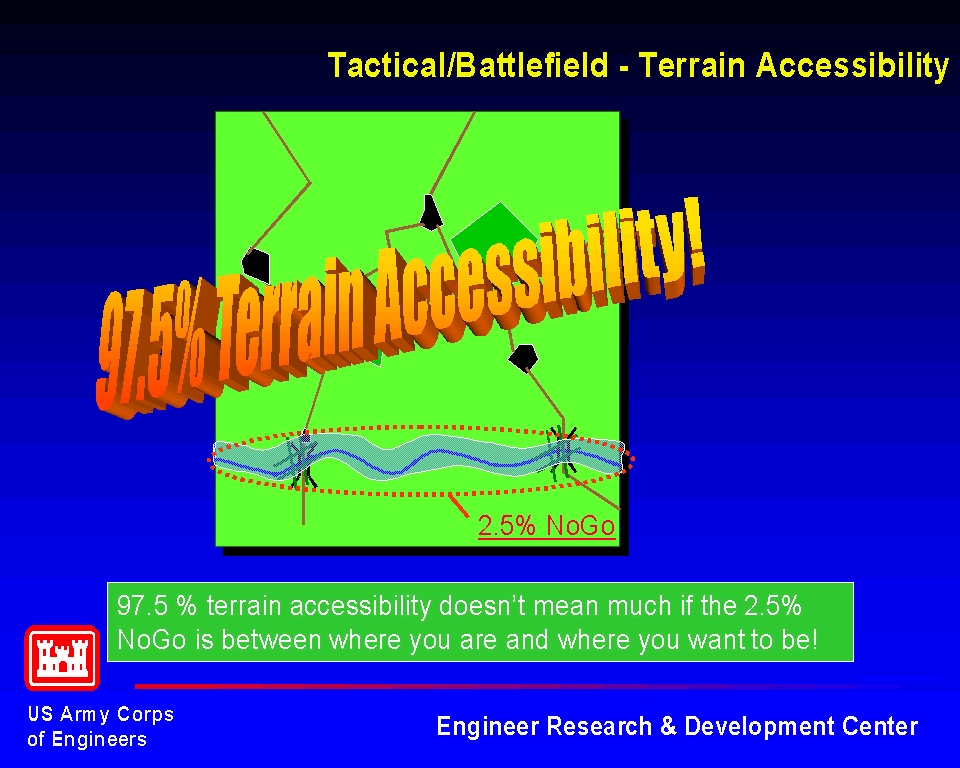
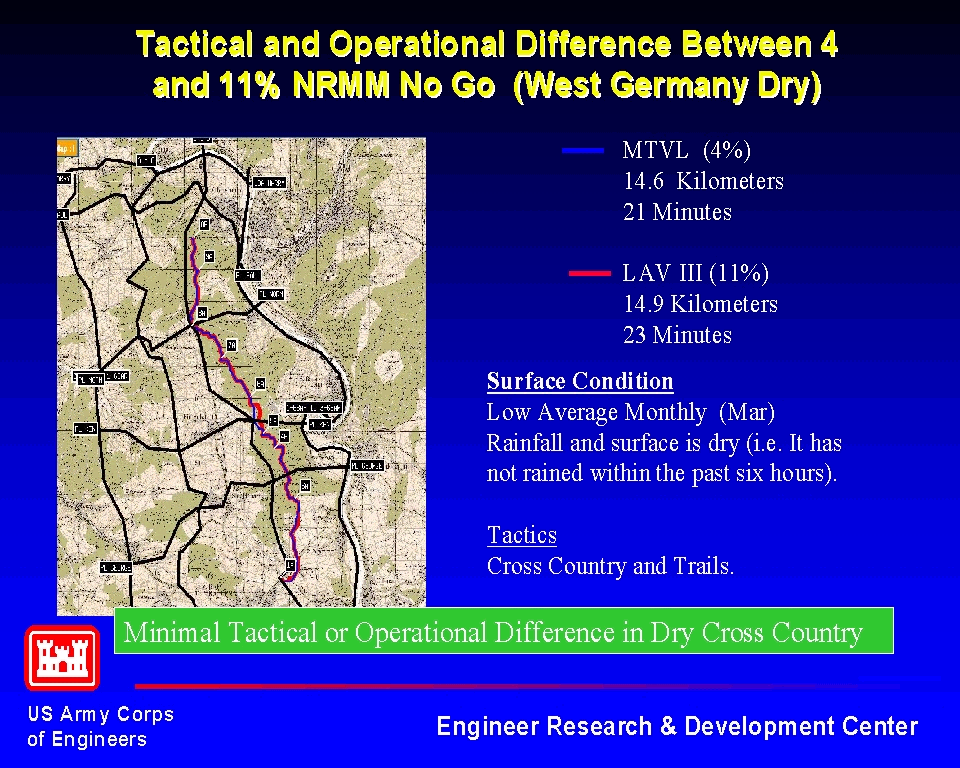
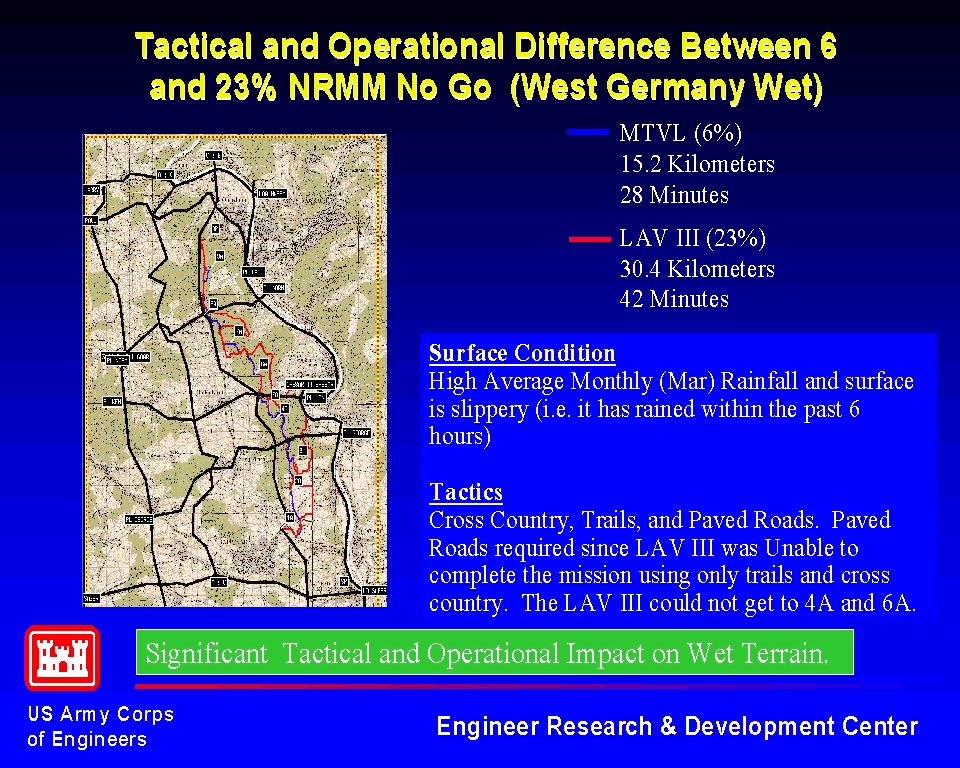
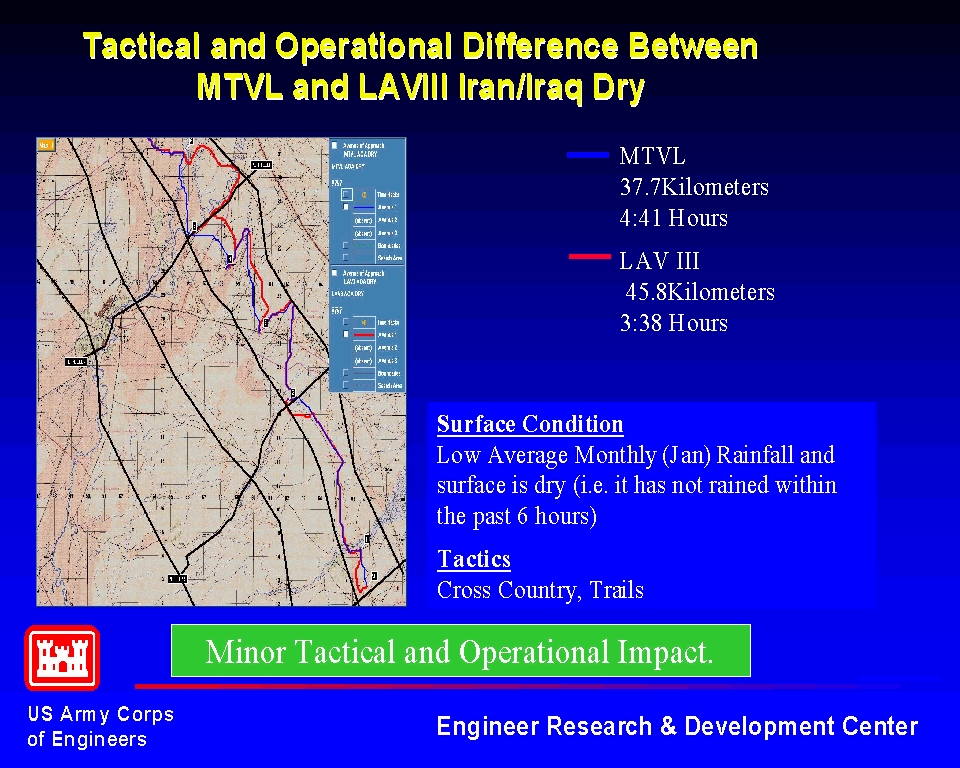
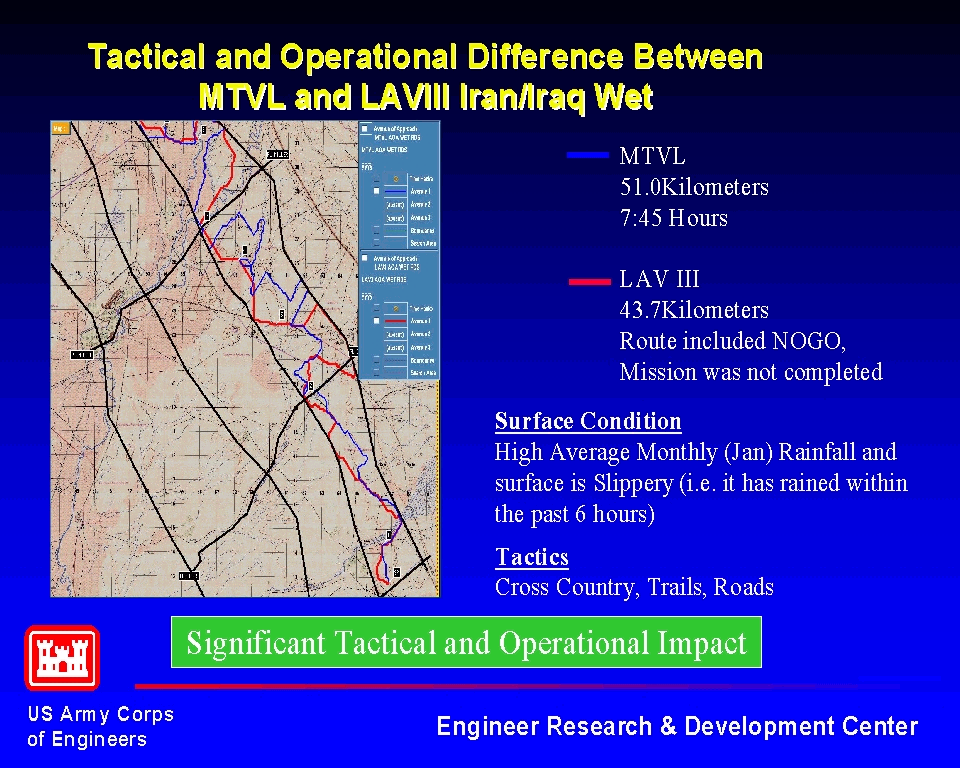
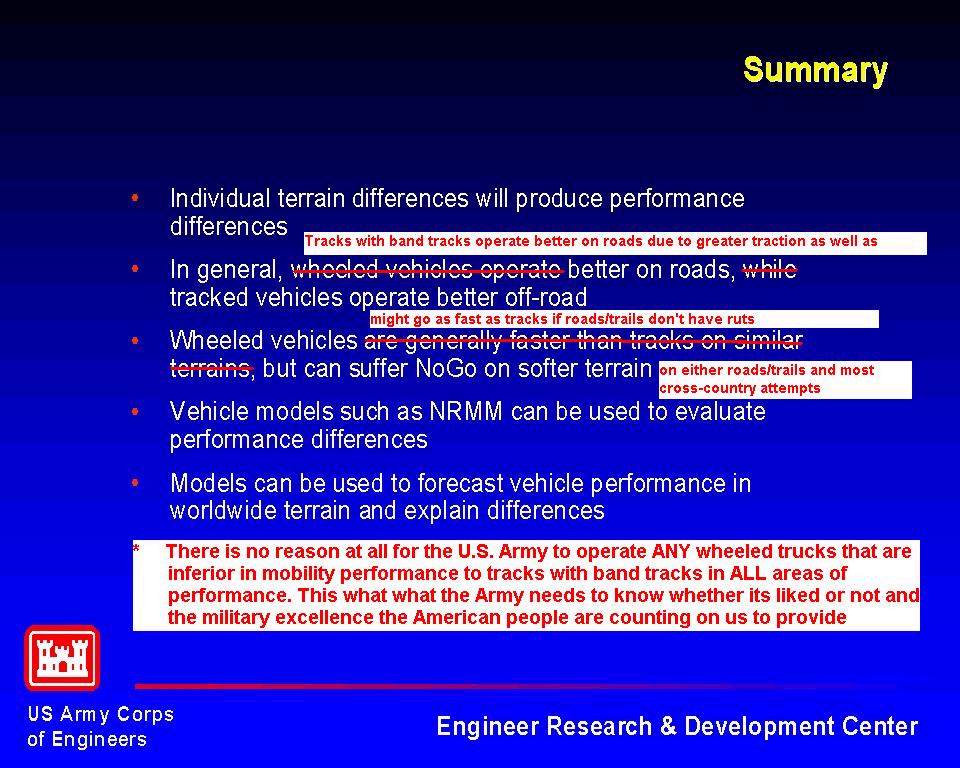
Table of ContentsPPT Slide #1: Tracks by Wheels Drivetrain Comparison
PPT Slide #2: Tracks drivetrain close-up PPT Slide #3: Wheel drivetrain close-up PPT Slide #4: Waterjets for wheels PPT Slide #7: Track ground pressures PPT Slide #8: Robustness against enemy fires? PPT Slide #9: Compactness for air-transportability PPT Slide #10: Simplicity = reliability and more power for armor and armaments PPT Slide #11: Tracks: proven in combat PPT Slide #12: Wheels: questionable at best in combat, still need transporters |
Author: 1st Tactical Studies Group (Airborne)
Email: itsg@hotmail.com
FEEDBACK!
Dave Hansen writes: "Iguana Technology Inc believes that the biggest opportunity for improvement for mobility is in ground vehicles. The first choice for getting from point A to point B, quickly and safely, considering short distances, on the earth's surface should be an amphibious ground vehicle. You're right [1st Tactical Studies Group (Airborne) Director] Mike [Sparks], the M113 Gavin (a 50's design) is unfortunately the best we have. Look at the millions of dollars spent on STOL and VTOL aircraft that dump Soldiers off in open landing areas and leave them to fend for themselves. A good example is the picture of a helicopter landing on a sandy beach in Indonesia, following the tsunami disaster, the crew throwing packages of food and water out on to the sand where only the healthy and uninjured could run to get it. Consider that with the right ground vehicle, you drive out of the helicopter and distribute the supplies to those that need them! In a military situation, you should be able to land in an open area, at a safe distance from the anticipated point of action and drive out of the aircraft with the capability of high speed on highway or open fields, across waterways and climb or descend short hills of 45 degrees. We see that Gavin as a vehicle that is designed to haul a squad of Soldiers, as far as it can go and then dump them out to fend for themselves. At Iguana we are working on armored, amphibious vehicle designs for one or two Soldiers that can be off loaded in large numbers and be used in detect, defend and attack modes either manned or remote controlled, that can be a source of food, fuel, armor, medical supplies and power. Again, we can see that the reason for loading the individual Soldier down with so much gear is because they don't have a vehicle that will cruise safely down a narrow hard road, cross a deep muddy ditch, swim a waterway and climb a bank of soft material without getting stuck."
|

